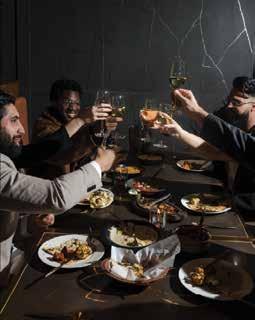






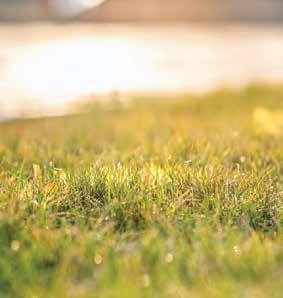


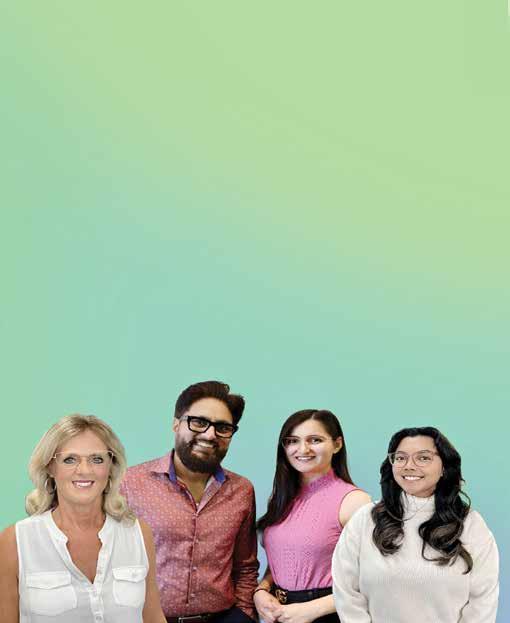
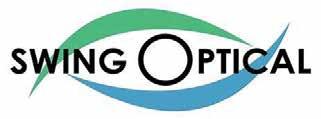









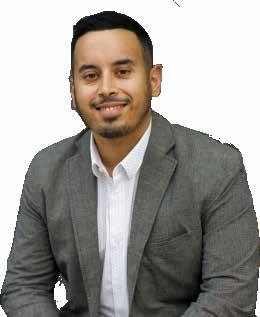



























Eighteen individuals are being recognized for their exceptional contributions as the Medal of Good Citizenship marks 10 years of celebrating community service in British Columbia.
“Today marks a decade of celebrating exceptional people who do remarkable things out of the goodness of their hearts,” said Premier David Eby. “This year’s honourees exemplify what it means to be a good citizen by selflessly stepping up to help their fellow British Columbians with kindness, compassion and commitment. Thank you to all the Medal of Good Citizenship recipients for inspiring everyone around you.”
The Medal of Good Citizenship celebrates individuals who have acted in a generous, kind or selfless manner for the betterment of their communities, without expectation of reward. The medal was established in 2015 and is the second-highest honour the province can bestow on its citizens. Including this year’s recipients, the province has awarded 196 Medals of Good Citizenship since the honour’s inception in 2015.
“As we commemorate the 10th anniversary of the Medal of Good Citizenship, I am deeply grateful for the outstanding individuals who have served our communities in powerful ways,” said Anne Kang, Minister of Tourism, Arts, Culture and Sport, and chair of the Medal of Good Citizenship selection committee. “This
year’s recipients continue that legacy. Their compassion and dedication have touched the lives of many, exemplifying the very best qualities of what it means to be a British Columbian.”
The Medal of Good Citizenship recipients for 2025 are:
Troy MacBeth Abromaitis (Lex7em’ken Drynock), Richmond, for rebuilding Lytton and honouring Indigenous survivors.
Roxana Aune, Surrey, for empowering immigrants and enriching Canadian society;
Montana Burgess, Rossland, for bridging communities and politics to build a sustainable, more inclusive B.C.;
Victoria Clarke, Saanich, for revitalizing search and rescue with compassion, courage and community leadership;
Wadood Dilsoz, Surrey, for being a lifeline for Afghan newcomers and a champion of cultural belonging in B.C.;
Dr. Olivier Drouin, Terrace, for bringing advanced medicine and holistic healing to northern B.C.;
Chloe Goodison, Port Moody, for empowering youth and saving lives through education on B.C.’s toxic-drug crisis;
Hanna Grover, Surrey, for empowering youth through poetry, advancing health
PUNJABI PATRIK A STAFF pMjfbI pwiqRkf stfP
equity and inspiring change across Canada; Pamela Horton, North Vancouver (posthumously), for being a lifelong champion of disability rights, accessibility and inclusive communities;

with Miracle Theatre, transforming theatre into a lifeline for charities;
Crystal Hung, Vancouver, for redefining philanthropy through innovation, inclusion and community empowerment;
Marie Elizabeth (Betty) MacMichael, Coquitlam, for pioneering long-term care in B.C. as a Métis health-care leader, transforming public health, education and elder care;
Kōshin Moonfist, Sooke, for leadership and daily acts of service, becoming a symbol of compassion, resilience and unity;
Tulugak Payette, Nanaimo, for championing truth and reconciliation, inspiring systemic change;
Ted Price and Anne Laughlin, Prince George, for founding and volunteering
Bruce Saunders, Victoria, for cultivating community and mental-health support through film, food and compassion;
Dara Jan Vink, Quilchena, for championing inclusion and 2SLGBTQI+ empowerment, building safe, joyful communities throughout B.C.; and
Joyce Wilby, Alert Bay, for preserving Alert Bay’s cultural legacy and First Nations heritage through literacy, history and community health.
Medal presentation ceremonies will be held in late fall 2025.
Nominations for the Medal of Good Citizenship are accepted year round. Any current or former long-term resident of B.C. is eligible to be nominated. Youth and posthumous nominations are welcome.
Chief Editor/Publisher : Dr. Andy Sidhu | General Manager : Dave Sidhu | Administration Executive : Ronnie Sidhu muwK aYzItr/ pbilsLr zf aYNzI iswDU jnrl mYnyjr dyv iswDU aYziminstRysLn mYnyjr rOnI iswDU
Punjabi Editor
Advertising Executive
Photographer

Layout Designer
Graphic Designer
Gurdeep Singh Grewal
Paramjit Singh Kanda
Shingara Shergill
Gurmeen Banipal
Gurjeet Kaur Muhar : : : : : : : : : :
pMjfbI aYzItr aYzvrtfeIijLMg mYnyjr PotogRfPr lyafAUt zIjLfeInr gRfiPk zIjLfeInr
gurdIp isMG gryvfl prmjIq isMG kMzf isLMgfrf sLyrigwl gurmIn bYnIpfl gurjIq kOr muhfr
Administrative Assistant : Gurneet Sidhu aYziminstRyitv aisstYNt : gurnIq






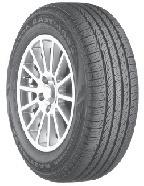




ircmMz df hfeIvy tU hYvn (svrg df rfh) bhuq hr mn ipafrf hY. ies Èihr dy nMbr pMj roz Aupr ieMzIaf klcrl sYMtr afP kYnyzf gurdvfrf nfnk invfs sB qoN pihlF
bnx vflf Dfrimk asQfn sI. awj ies
ieiqhfsk rsqy dy cVHdy pfsy 25 dy krIb Dfrimk asQfn ircmMz Èihr df mfx vDf rhy hn.vwKry vwKry DrmF vfry jfxkfrI hfsl krn leI ieh sVk bhuq hI mhwqv pUrn hY.ies roz Aupr stIvstn hfeIvy qoN
birjport roz qwk kfPI kirÈcIan crc, iek boDI mMdr, iek iqbqn monfstrI, do ihMdU mMdr, iek gurdvfrf, iek msjd, iek jUieÈ zya skUl,do kirÈcIan skUl, iek
ieslfimk akYzmI aqy iek pMjfbI skUl
ies sVk dI Èfn hn.vwKry vwKry DrmF vfry
jfxkfrI
hfsl krn

leI ividafrQI aqy hor swjx iewQy afAuNdy hn. ies islisly ivc gurdvfrf nfnk invfs bhuq cMgI BUimkf inBf irhf hY.Kfs kr skUl dy bwicaf leI qF ieh rfh isiwKaf df iek bhuq hI lfBdfiek vsIlf hY.
ies sbMD ivc 30 julfeI, idn buDwvfr nUM vYnkovr imÈn aYzvMYcrj dy 20 ividafrQI
aqy AuhnF dy aiDafipk aYnfbYlf gurdvfrf nfnk invfs ircmMz ivKy nqmsqk hoey.
ies adfry dy ividafrQI hr sfl gurdvfrf nfnk invfs ivKy nqmsqk hox leI af-
ANdy hn. Auh iswK Drm aqy sfAUQ eyÈIan kimAUintI aqy klcr vfry jfxkfrI hfsl
krnf cfhuNdy sn. gurdvfrf pRbMDk kmytI vloN pRDfn, mohx isMG sMDU aqy cyarprson bIbI kÈmIr kor jOhl ny AuhnF df inwGf svfgq kIqf aqy ivsQfr ivc iswK Drm aqy afpxI kimAUintI vfry jfxkfrI idwqI. iehnF drÈkF ny bhuuq hI sUUJvfn svfl pwuCy.ies qoN AuprMq AuhnF ny kuJ XfdgfrI qsvIrF BI iKwcIaF . jfx qoN pihlF AuhnF ny gurU ky lMgr df afnMd mfixaF aqy gurUu Gr dy pRbMDkF df hfridk DMnvfd kIqf. Èukrfny vjoN AuhnF ny bIbI kÈmIr kor jOhl nUM iek PwulF df guldsqf dy ky AuhnF df mfx kIqf. ieho ijhy kfrjF nfl sfzI smuwcI kimAUintI df aqy gurdvfrf sfihb df mfx hor BI vDdf hY.

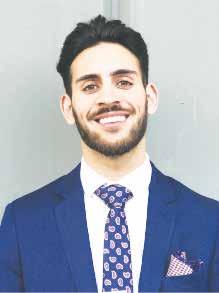













Review by Veeno Dewan



Since its introduction in 2022, the four -door, five passenger Maverick has proved extremely popular, offering an attractive alternative to bulky, fuelhungry mid and large sized pickups. The best feature is its availability with either a gasoline engine or as a selfcharging electric hybrid version.
of torque, and a net 191 hp when paired with the electric hybrid motor. It’s mated to an automatic continuously variable transmission (CVT). Towing capacity for the hybrid is 907 kg. The Maverick’s payload is 680 kg.




For 2025, there is a new front fascia and All-Wheel Drive is now available as an option on the gasoline and Hybrid model. Also new is a neat “Lobo” trim line offering ‘80s and ‘90s style sport truck vibes with a lowered ride height, standard body kit, and different front fascia. The Maverick is still only available as a four -door crew cab with a single 5.5 feet pickup bed as standard.
The gasoline engine on the XL and XLT trims is a EcoBoost turbocharged 2.0L four-cylinder unit producing 250 hp and 277 lb-ft of torque This is paired with an eight-speed automatic transmission. The 2025 Ford Maverick comes standard with front-wheel drive. All-Wheel Drive is optional. The Maverick hybrid uses a 2.5L four-cylinder engine that makes 162 hp and 155 lb-ft
The 2025 Ford Maverick model comes in 12 trim levels in Canada, ranging from $34,500 to $48,000. The entrylevel, XL Hybrid FWD model starts at $34,500. The mid-range XLT Hybrid AWD trim is $39,500. The Maverick Lariat is a top-of-the-line trim with extra equipment and features starting at $46,500. The performance Off- Road Tremor AWD is priced at $48,000. Freight and PDI is $2,195.
The 2025Maverick Lariat Hybrid as tested included the 2.5L hybrid engine and the CVT. Upgraded features on the Lariat include: 8-speaker B&O sound system, power-adjustable driver’s seat, dual-zone automatic climate control, and a power-sliding rear window. In terms of infotainment there is a large 13.2-inch digital touchscreen with Ford’s excellent SYNC 4 system. There is also a 8-inch instrument clus-


ter screen, wireless charging pad, and two USB ports.
Our truck looked even snazzier with the optional Black Appearance Package as fitted. This includes an aggressive blackout treatment to the grille with a black mesh and black surround. Mirrors, Badges Door handles, tailgate handles, and side mirrors are also finished in black. At the rear Darkened Taillights are also present. The look is finished off with 19-inch Black Wheels and Black Ford badges on the front and rear. An optional Engine block heater and the 4k tow package with a respectable 4,000-pound towing capacity was also added.
Overall, our tester was a stunning looking truck and drew much admiration during our time with it. Our Lariat was base priced at $46,500 with options totalling $4,950. Final price was $53,645. Delivery and destination was $2,195.
Interior wise- there is room for five occupants, and a practical versatile cabin designed for maximum functionality. Nice touches include larger water bottle holders in the door panels, a phone holder in the centre console and plenty of storage cubbyholes. The handy wireless phone recharging pad is also a neat touch. The rear seats feature a center armrest with cupholders and also flips up for extra cargo storage. Overall interior room is good, with comfortable seats and adequate leg room in the rear.
Safety is well taken care of with numerous safety features, Our tester
also came with the optional Ford Co-Pilot360, a suite of driver-assist technologies including: Blind Spot Information System (BLIS) with CrossTraffic Alert, Lane-Keeping System, Pre-Collision Assist with Automatic Emergency Braking, Rear View Camera and Auto High-Beam Headlamps.
On the road, the Maverick offers a smooth and composed feeling. It rides almost car -like with little truck style hopping. The AWD system also proved to provide good traction during a fierce summer rainstorm. The ride quality is firm and body roll is well controlled. The steering is also well proportioned with good feedback and the CVT is efficient, but won’t allow the truck to perform like a sports car of course and has its limitations in responses. However, the Maverick performs well on both the highway and in the urban grind. Fuel efficiency is impressive. The hybrid model is rated at 5.9 litres per 100/Km in the city and 6.7 L/100km on the highway, with a combined rating of 6.2 L/100km.
To sum up, there are not many downsides, the price can go up when you start adding options. Overall, the Maverick is very impressive. The hybrid engine version is a standout in particular. Highly recommended.
2022 Ford Maverick Lariat Hybrid AWD: Price as tested with options$53,645. Delivery and destination $2,195.
More info at www.ford.ca.





We do all types of Renovations
asIN hr qrF dI rYnovysLn krdy hF: • lYmInyt
• Laminate • Tiles
• Painting
• Framing
• Drywall Finishing
• Kitchen Cabinets
• Stone Works
tfeIlF • pyNitMg
• zrfeIvfl iPinisLMg
• ikcn kYbints • PRyimMg
• ston vrk
• Plumbing • plMibMgL
You will get the best quality work at DGB home renovation
New Basement and Bathroom Extension
nvIN bysmYNt aqy bfQrUm aYkstYnsLn CALL GAGAN : 604-791-3933


vwK vwK DrmF dy lok afpxI afpxI Dfrimk afÈqf muqfibk jo vI AuhnF dy Drm pRcfr dy moZIaF ny jo ivvfh dI pRMprf jF mrXfdf bxfeI huMdI hY Aus muqfbk ivafh dI rsm pUrI krky gRihsQI jIvn ÈurU krdy hn. vYsy sfry DrmF ivc pqI pqnI dy iewk dUjy pRqI vfady qy iËMmyvfrIaF huMdIaF, ijMdgI dy aKIrI svfs qwk qoV inBfAux dy aYgrImYNt aqy smJOqy huMdy hn . ikRsIan lok ivafh qy Gwt tfeIm lfAuNdy pMj cfr imMt ivc iksy pfrk jF hfl ivwc jF crc aMdr pfdrI dy sfhmxy lfVf lfVI pqI pqnI bnx qoN pihlF afho sfhmxy KVy huMdy pfdrI bfeIbl Koldf aqy do ku vfady iek dUjy pRqI lYdf “kI qusIN swcf ipafr krdy ho, dUsrf guwz aOr bYz tfeIm iekwTy rhogy” lfVI vwl mUMh krky “ies nUM hsbYNz mMndI hY” Auh hF ivc isr ihlfAuNdI hY. Pyr lfVy nUM puwCdf “ies nUM vfeIP mMndf” Auh hfmI Brdf hY . Pyr dony iek dUjy nUM muMdrIaF pihnfAuNdy hn. bs ivafh ho igaf. mgry sfry mihmfn qfVIaF mfr ky suafgq krdy hn . muslmfn Drm ivwc ivafh qy inkfh rfq nUM huMdy lfVI aMdr bYTI huMdI qy lfVf bfhr . kfËI pihlF donoN qo ivafh krx df kbUl nFvF lYdf, aMnI kfxI kbUl krvfAuNdf hY. hwk-mihr iliKaf jFdf ik Cwz CzfeI qlfk hox dI sUrq ivwc lfVy nUM kfËI vwloN iliKaf hwk-mihr, pqnI vfsqy qfrnF pYNdf hY. hwk-mihr dI rkm pihlF qih kIqI huMdI hY. kfËI afieqF qy kurfieqF kurfn ivwcoN pV ky suxfAuNdf ieh aslI donF
dIaF ËuMmyvfrIaF Auwqy sihmqI lYdf qF inkfh kbUl hoky awlfh dI drgfh ivwc pRvfn cVdf hY. aFm muslmfn BfeIcfry ivwc iqMn ÈfdIaF iewko smyN jfieË hn. ihMdU Drm muqfbk Pyry irwg vyd rfhIN rfq nUM huMdy hn. iehnF nUM bydI dy Pyry vI ikhf jFdf hY. rfq nUM ivhVy ivwc pihlF bydI iqafr kIqI jFdI hY jo kuJ Pfsly nfl cfr sotIaF KVIaF krky AuwproN cOhF dy isr ivckfr cfry pfsy iewk iewk lMmIaF sotIaf lfky jF rwsIaF bMn ky iewk cOrs qMbU numF Auwpr PulkfrI jF cfdr bMn leI jFdI hY ijs dy Qwly agnI kuMz ivc awg bfÜ ky Auwpr dysI iGE KuÈbUdfr smwgrI myvy pfey
jFdy hn. lfVf qy lfVI Auwpr dI swq Pyry
lYdy hn. bhuqI vfr lfVf mUhry lwg ky iqMn
Pyry lYdf iPr iqMn Pyry lfVI mUhry lwgdI hY
aqy swqvyN Pyry dono brfbr brfbr cwldy hn. keI QfeI cfr Pyry mUhry lfVf qy lfVI mUhry lwg ky iqMn Pyry lYNdI hY. pMzq svfmI jI mMqr mMglm Aucfrn krdy hn. iswiKaf vjoN pfrbwqI nUM ihmfilaf dI bytI kih ky iÈv
jI mhfrfj dIaF ipafr sMbMDF dIaF AuDfrxF idwqIaF jFdIaF hn. iswK Drm ikAuNik ieh ihMdU Drm ivwcoN inkilaf krky awDI rfq qoN
bfd bydI dy Pyry vYidk rUp ivwc hI hoieaf krdy sn. bhuqy gurUaF qy BgqF dy ivafh
vI bydI dy PyiraF nfl hI hoey sn. muÊl sfmrfj kfl dOrfn iswKF ny bhuqI lVfeI mugl hkUmq dy Ëbr ijnfh ivruwD hI lVI . iswKF df aslI rfjnIqk afp df GrGft nhIN sI. GoiVaF dI kfTIaf df srHfxF
gurdyv isMG aflmvflf
jF jMglF ivwc vfsf sI. gurUaF ny pwkIaF rIhfieÈf nhIN bxfeIaF qy nF hI rfj Bfg
sQfipq kIqf. aFm sMgqF nUM rwb df aslI
AupdyÈ dyky mukMbl iensfnIaq iswK iqafr krx ivc hI iËafdf smF Üfieaf. muÊl gey aMgryË afey pr ivafh CotI Aumr dy bwicaF dy hoeI gey nfl sOdybfËI vI lVkIaF df ivwkxf jF dfj dhyj lYxf cldf irhf . iek pfsy iswK PrIzm ÌfeItr awgy afey qy kurbfnIaF idwqIaF jf rhIaF sn dUsrf aMgryË hkUmq nfl nF imlvrqx lihr ËorF
Auwqy sI. ijMnF ivc kUikaF ny sB qoN pihlF rol adf kIqf . aMgryË srkfr ivruwD qy dys aËfdI df ibgl vjf idwqf. kUikaF ny kUkf lihr surU kIqI. ieiqhfs dwsdf ik ds ds bfrF bfrF kUikaF nUM iek lfeIn ivc KVf ky isrP iek goÜI nfl hI ÈhId kIqf jFdf sI. iewk dPf iewk kUkf ijafdf mwDrf sI Aus ny soicaf Èfied Aus dy golI nF vwjy, Auh golI cflk nUM kihMdf “TihrIN ! iek imMt myry vfsqy kuJ pwkIaF iewtF ilafE, iewtF ilaFdIaF geIaF Aupr KV ky kihMdf “hux clfE golI” ies qrF Auh qF ÈhId ho jFdy sn pr golI clfAux vfly dI afAuNx vfly smyN nINd siQr nhIN sI rihMdI rfq nUM
BVwk BVwk AuwTdy rihMdy. kUikaF df muwK bys aDfr ipMz BYxI ivKy sI aMgryËF dy tfAUt
Es eyrIey ivc iPrdy qy muKbrIaF krdy sn. Es tfiem bRIitÈ gOrimMt dI awK hmyÈf BYxI ipMz Auwqy huMdI. kUikaF Auwqy bhuq Ëulm hoey. pr AuhnF aËfdI lihr nUM mwDm nhIN pYx idwqf. jUn 03/1863 ivwc Audo dy kUikaF dy siqgurU rfm isMG ny mogy iËly dy ipMz Koty ivKy 6 joiVaF dy anMd kfrj krky ivafh kIqy jo bgYr dhyj dfj qoN sn ijs ivwc lVky dI Aumr Gwt qoN Gwt vIh sfl aqy lVkI dI Aumr 18 sfl sI . hflFik siqgurU rfm isMG df ivafh vI vYidk rIqI muqfbk Pyry lYky hoieaf sI. pr AuhnF smfijk kurIqI nUM nwQ pfAux vfsqy gOrimMt kMnUn dy vrKlfp XuwD surU kIqf. ieh bhuq vwzI kRFqI df ibgl sI. iewk nfbflg bwicaF dy ivafhF Auwqy pfbMdI, dUsrf dfj rihq ikAuNik pihlF lok kuVI jMmdI nUM mfr idMdy jF dwb dydy jF lVkIaF nUM awgy vyicaf jFdf ies krky kuVI jMmI nUM lok
Bfr smJdy. kUikaF ny bgYr dfj qo bflg bwicaF dy ivafh krny hkUmq qy pMzqF nUM ieh gwl ikwQy pcdI sI. ieho ijhy ivafhF dI bhuq ivroDqf hoeI. AuhnF bfGy purfxy Qfxy ivc rfm isMG Auqy rpt ilKvf idwqI qF siqgurU rfm isMG nUM bhuq cwkr Qfxy dy lfAuxy pey bVIaF qrIkF peIaF pr AuhnF eIn nhIN mMnI . aKIr goirafM ny akqUbr 22/1909 ivwc anMd kfrj aYkt pfs kr idwqf ijs ivwc ivaFdV lVky dI Aumr 20 sfl qy ivaFdV lVkI dI Aumr 18 sfl in-
Xukq hoeI. ieh kMnUn sB qoN pihlF pitaflf irafsq ivwc lfgU hoieaf . jUn 03/1963 ivwc kUikaF dI gwdI Auqy siqgurU Audy isMG jI ibrfjmfn sn, AuhnF dI rihnumfeI hyT anMd kfrj dI rsm pUry 100 sflf bfad sO sflf ÈqfbdI mnfAuNidaF ipMz Koty (qihsIl bfGf purfxf) ivKy mnfeI ijs ivc 150 bwcy bwcIaF ny anMd kfrj bÊYr dfj dhyj qoN krvfey sn. iswK Drm dI rihq mrXfdf jo ÈRomxI kmytI dy muqfbk pRvmfixq hY anMd kfrj cfr lfvF, anMd sfihb, do Coty ò Èbd ivvfh hoaf myry bfblf qy pUrI afsf jI mnsf myry rfm dy gfien krky ardfs kIqI jFdI qy sfihb sRI gurU gRMQ sfihb jI qoN hukmnfmf srvn kIqf jFdf hY . rsm dOrfn lfVI lVkI Kwby pfsy lfVf lVkf swjy pfsy brfbr brfbr sfihb sRI gurU gRMQ sfihb jI nUM snmuK ho ky, aMdro iewk dUjy nfl juVdy hn cfr lfvF nUM pUrI qrF smJ ky gRihsQI jIvn arMB krdy hn. sfrI mrXfdf dI rsm sMgq dI hfËrI ivwc inBfeI jFdI hY . cfr lfvF df kIrqn srvx kridaF cfr prkrmF sfihb sRI gurU gRMQ sfihb jI swjy hwQ rwKidaF AudfÜy huMdIaF ijs ivwc lVkf awgy qy lVkI ipwCy ò cldI hY. kYnyzf ivwc srkfr pRmfixq gRMQI isMG jF kmytI mYNbr ivafh smyN lfVf lfVI dy pihlF qoN ley hoey mYirj lfiesYNs dy bfkI rihMdy kflm pUry krky dsqÉq krky sUbf rijstrI (vYtl styits ) nUM Byjdf, pwkf mYirj srtIiPkyt iswDf ivafh krvfAux vfilaF dy aYzrs Aupr myl rfhIN af imldf hY. kort kcihrI vflf ivafh qF bhuqf sOKf hY jwj dy sfhmxy lfVf lfVI sfrI Aumr ivafh inBfAux dy vfady huMdy hn qF jwj Aus dI pRvfngI idMdf hY . XUrp qy nfrQ amrIkf ivc ‘kfmn lfa’ aDIn boafey PirMz qy grl PirMz nUM iekwiTaF rihMidaF hsbYNz vfeIP df vI ruqbf hfisl huMdf hY joik srkfry drbfry pyprF ivc iliKaf jFdf hY. rwb nF kry zIvors qlfk dI sUrq ivc kot kcihrIaF dF smF bcdf isrP ijs idn vwK ò hoey sYpryÈn idn qfrIK Xfd rwKxI pYNdI hY. bs Es idn qoN alihdf alihdf rihxf ÈurU kr idMdy hn jF hor iksy nfl ‘kfmn lfa’ muqfibk rihxf ÈurU kr idMdy hn. ies qrF BfvyN iek jnfnI dy pMj cfr bwcy joN do iqMn kfmn lfa pqIaF dy ho skdy hn jo goiraF dy klcr muqfbk jfieË hn. pr vwKo vwK hox dI sUrq ivc bfp bwcy df Krcf adf krI jFdf hY qy Auh afpdy afpdy bwicaF nUM idn idhfr imldy rihMdy hn. iPlpfien ivwc rihMdy lok qgflo BfÈf boldy joN ÈpYins ivwc inklI bolI hY AuwQy zIvors hY hI nhIN, iekwlI Cwz CzfeI hY bs Cwzx vfly pqI nUM hmyÈf pqnI qy bwicaF nUM Ércf dyxf pYNdf hY .
rfq dy Kfxy leI

qrHF bxfE
stfeIl icwlI pnIr, hr koeI krygf psMd
jdoN vI asIN iksy rYstorYNt ivwc jFdy hF, qF
stfrtr vjoN sB qoN pihlF jo cIË mn ivwc afAuNdI hY Auh hY icwlI pnIr. ieh idl nUM
KuÈ krdf hY, pr kI qusIN jfxdy ho ik qusIN Gr ivwc vI AuhI Èfndfr icwlI pnIr bxf skdy ho aqy Auh vI ibnF iksy muÈkl dy
jdoN vI asIN iksy rYstorYNt ivwc jFdy hF, qF stfrtr vjoN sB qoN pihlF jo cIË mn ivwc afAuNdI hY Auh hY icwlI pnIr. ieh idl nUM KuÈ krdf hY, pr kI qusIN jfxdy ho ik qusIN Gr ivwc vI AuhI Èfndfr icwlI pnIr bxf skdy ho aqy Auh vI ibnF iksy muÈkl dy? hF, awj asIN quhfnUM rYstorYNt stfeIl icwlI pnIr bxfAux dI ivDI dwsFgy, ijsdI pflxf krky qusIN afpxy rfq dy Kfxy nUM Kfs bxf skdy ho.
smwgrI:
pnIr: 250 gRfm tukiVaF ivwc kwitaf hoieaf)
mYdf: 2 cmc
kOrn stfrc: 2 cmc
lUx: 1/2 cmc
kflI imrc pfAUzr: 1/4 cmc
pfxI: loV anusfr (bYtr bxfAux leI)
qyl: qlx leI
qyl: 2 cmc
lsx: 1 cmc (bfrIk kwitaf hoieaf)
adrk: 1 cmc (bfrIk kwitaf hoieaf)
hrI imrc: 2-3 (bfrIk kwtI hoeI)
ipafË: 1 (tukiVaF ivwc kwitaf hoieaf, prqF nUM vwK kIqf hoieaf)
iÈmlf imrc: 1 (tukiVaF ivwc kwtI hoeI)
soieaf sOs: 2 cmc
lfl imrc dI ctxI: 1 cmc (qusIN afpxI psMd anusfr aYzjst kr skdy ho)
tmftr kYcwp: 1 cmc
isrkf: 1 cmc
lUx: suafd anusfr
kflI imrc pfAUzr: 1/2 cmc
kOrn Plor df Gol: 1 cmc kOrn stfrc 2 cmc pfxI ivwc Gol lE
hrf ipafË: sjfvt leI
ivDI:
iewk vwzy ktory ivwc mYdf, nmk aqy kflI imrc pfAUzr imlfE.
QoVHf-QoVHf pfxI pf ky iewk sMGxf Gol bxfE. XkInI bxfE ik Gol ivwc gMZF nf bxn. hux ies Gol ivwc pnIr dy tukiVaF nUM cMgI qrHF kot kro.
iewk pYn ivwc qyl grm kro. jdoN qyl drimafnf grm hovy, qF pnIr dy tukVy hOlIhOlI pfE.
AuhnF nUM sunihrI aqy QoVHf kirspI hox qwk pkfE. pnIr nUM bhuq iËafdf nf BuMno, nhIN qF ieh sÉq ho skdf hY.
vfDU qyl kwZx leI qly hoey pnIr nUM ikcn tfvl 'qy kwZo.
Ausy pYn ivwcoN vfDU qyl kwZ idE, isrÌ 2 cmc qyl Cwz idE.
grm qyl ivwc bfrIk kwitaf hoieaf lsx, adrk aqy hrIaF imrcF pfE aqy kuJ
sikMtF leI BuMno.
hux kwty hoey ipafË aqy iÈmlf imrc pfE.
AuhnF nUM qyË awg 'qy isrÌ 2-3 imMt leI BuMno. sbËIaF ivwc QoVHf ijhf krMc hoxf cfhIdf hY.
awg hOlI kro aqy soieaf sOs, lfl imrc dI ctxI, tmftr kYcwp aqy isrkf pfE. sB kuJ cMgI qrHF imlfE.
nmk aqy kflI imrc pfAUzr pfE. iDafn rwKo ik sOs ivwc nmk vI huMdf hY, ies leI QoVHI mfqrf ivwc nmk pfE.
hux iqafr kIqy kOrnPlor Gol nUM sOs ivwc pfE. iesnUM lgfqfr ihlfAuNdy rho qF jo gMZF nf bxn.
sOs dy gfVHy hox qwk pkfE. jykr qusIN gRyvI imrc pnIr cfhuMdy ho, qF qusIN QoVHf ijhf grm pfxI pf skdy ho.
jdoN sOs gfVHf ho jfvy, qF qly hoey pnIr dy tukVy pfE.
pnIr nUM sOs nfl cMgI qrHF imlfE, qF jo hryk tukVy 'qy sfs dI cMgI prq af jfvy.
iesnUM iewk imMt leI pkfE aqy iPr gYs bMd kr idE.



jy qusIN dMd lvfAuxy hn jF iPr lgvfey hn
dMd purfxy hn aqy nvyN lvfAuxy hn quhfzy lvfey dMd iZqly hn jF tuwt gey hn blrfj nfl apfieMtmYNt bxfE aqy Kfxf
cMgI qrHF KfE
jy quhfzy sfry dMd nhIN inkly pr Kfxf TIk qrHF nhIN Kf huMdf qF blrfj nUM imlo ieh quhfzI syvf leI srI ivwc hn.



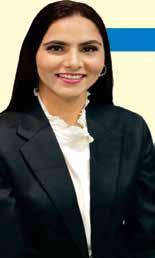

Fifteen people who exemplify excellence will be invested into the Order of British Columbia, the province’s highest honour.
Established in 1989, the Order of B.C. recognizes individuals from all walks of life and fields of endeavour who have made extraordinary contributions to the province and beyond.

The 2025 recipients of the Order of B.C. are:

#1, 32056 SOUTH FRASERWAY (ABOVE MEDICAL CLINIC) CALL DR. SHVETA SAINI MBBS, MD, DHMHS (ONTARIO) PRACTICE SINCE 15 YEARS 604-304-2236
Stan Bevan (Satsan), Terrace, for his cultural leadership, mastery as a carver and pioneering contributions to education that shaped a generation of Northwest Coast First Nations artists.
Graham Clarke, Vancouver, for his role in driving Vancouver’s rise as a global hub through visionary leadership in aviation, trade and tourism.
Charmaine Crooks, CM, West Vancouver, for her trailblazing Olympic legacy and tireless advocacy for youth, equity and global sport.
Dr. Sandy Dhami, Richmond, for her enduring dedication to transforming the lives of neurodiverse children and families through inclusive education, mentalhealth advocacy and compassionate care.
Dr. Ruth Grunau, Vancouver, for her pioneering research that has transformed global understanding and care of infant pain, advancing neonatal health of infants born very pre-term and shaping clinical practices worldwide.
Elder Gwen Harry (Chésha7 / Wigistame), Squamish, for her lifetime of transformative leadership in education, healing and economic development, all while inspiring collaborative reconciliation in B.C.
Dr. Mark Jaccard, Vancouver, for his career contributions to global climate action through innovative energy and environment policy analysis, public engagement and pragmatic, science-based leadership.
Jeremy Kinsman, Victoria, for his lifelong service in diplomacy and public dialogue,
advancing Canada’s voice on the global stage.
Chief Robert Louie (Simo), OC, West Kelowna, for his transformative leadership in Indigenous self-governance and economic development, setting a national standard for community empowerment and prosperity.
Dr. Robin Love, Lantzville, for his visionary leadership and mentorship, while transforming palliative care and inspiring a global standard of compassionate, equitable end-of-life care.
Susannah Pierce, West Vancouver, for her groundbreaking leadership in business and unwavering advocacy for women and Indigenous communities.
Allan Seckel, KC, Vancouver, for his leadership and lasting impact across law, government and community, helping to shape a more just and inclusive B.C.
Martha Sturdy, West Vancouver, for her groundbreaking contributions to art and design, while inspiring generations through bold creativity, global influence and a lifelong commitment to trailblazing for women in business and the arts.
Alan Twigg, CM, Vancouver, for his unparalleled contributions to B.C.’s literary landscape, championing writers, preserving stories and building the foundation of a thriving literary culture.
Dr. John Yee, Vancouver, for his life-saving leadership in lung transplantation and cancer screening, delivering world-class care and hope to patients in B.C.
The appointees will be invested at a ceremony at Government House in Victoria on Tuesday, Sept. 16, 2025.


The Province is celebrating five years of the B.C. Access Grant, a program that has helped tens of thousands of students throughout B.C. afford post-secondary education.
“When we support people, we support the economy, because people are the economy. Our government will continue to act to make post-secondary education, accessible, relevant and affordable for students,” said Jessie Sunner, Minister of Post Secondary Education and Future Skills. “While the U.S. administration may aim to weaken us, B.C. is Canada’s economic engine, and by reducing financial barriers to education and training opportunities, we’re continuing to respond to a changing world and building a stronger, more resilient economy for all British Columbians.”
Launched in 2020, the B.C. Access Grant was the first new post-secondary grant program introduced in the province in 15 years. The grant has helped more than 88,000 students in accessing post-secondary education and training, and saved students and their families up to $8,000.
The needs-based, upfront and nonrepayable grant has provided more than $178 million in financial assistance to low- and middle-income students, future workers and their families. This eases financial pressures and improves access to education and training opportunities throughout B.C. In a rapidly changing and dynamic global economy, this grant ensures that
students will have access to education and skills training that is affordable, accessible and responsive to the needs of today’s changing economy.
“British Columbia is rapidly emerging as a global hub for innovation, and these students will be key to closing the skills gap and driving our province’s economic growth,” said Ravi Kahlon, Minister of Jobs and Economic Growth. “By continuing to invest in a strong, inclusive economy, we're supporting the growth of thriving sectors like manufacturing, technology, life sciences, natural resources, and beyond — where these students will play a vital role.”
The grant is available to eligible students attending any of B.C.’s 25 public post-secondary institutions and can be used to help cover the costs for tuition, living expenses or any education-related costs students may have during their studies. Students enrolled in full-time studies can apply for up to $4,000 per year. Those in part-time studies can receive up to $1,000 per year.
The B.C. Access Grant is a key part of the Province’s commitment to developing B.C.’s workforce by making post-secondary education more affordable and accessible. This grant supports and strengthens B.C.’s growing economy and positions British Columbia as a leading driver of Canada’s new and emerging economy.

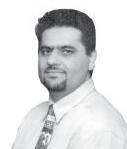







lgpg 1000 mIl pRqI GMtf dI rÌqfr nfl GMm rhI hY DrqI, iPr vI
ikAuN nhIN huMdf GuMmx df aihsfs
ieMnI qyËI nfl GuMmx dy bfvjUd sfnUM ies df aihsfs nhIN huMdf. jdik Gwt rPqfr ‘c kuJ sikMtF leI gol-gol GuMmdy hF qF sfnUM cwkr afAux lwgdy hn. iPr aijhf
ikAuN huMdf hY ik DrqI dy GuMmx df sfnUM aihsfs nhIN huMdf? afਓ, iesdI vjHf nUM smJIey.
kI qusIN kdy afpxy iksy dosq nfl golgol cwkr lgfey hn jF iek-dUjy df hwQ
PV ky qyËI nfl GuMmy ਓ? jy hF, qF quhfnUM



pqf hovygf ik kuJ hI smyN ‘c cwkr afAux
lwgdy hn. pr kI qusIN jfxdy ho ik ijs
DrqI ‘qy asIN rihMdy hF, Auh sUrj dy cfry pfsy lgpg 100 mIl pRqI GMtf dI rPqfr
nfl GuMm rhI hY?
ieMnI qyËI nfl GuMmx dy bfvjUd sfnUM ies
df aihsfs nhIN huMdf. jdik Gwt rPqfr ‘c
kuJ sikMtF leI gol-gol GuMmdy hF qF sfnUM
cwkr afAux lwgdy hn. iPr aijhf ikAuN huMdf
hY ik DrqI dy GuMmx df sfnUM aihsfs nhIN
huMdf? afਓ, iesdI vjHf nUM smJIey.
irlyitv moÈn df ipRMsIpl
sfnUM DrqI dI gqI df aihsfs ies leI nhIN
huMdf ikAuNik asIN aqy sfzy afs-pfs dIaF
sfrIaF cIËF iewko smyN ‘qy Ausy rPqfr nfl
GuMm rhIaF hn. ijvyN iek cwldI hoeI tRyn ‘c
bYTy XfqrI nUM tRyn dI rPqfr df aihsfs nhIN
huMdf, jd qk Auh bfhr nhIN dyKdf, ਓsy qrHF
asIN vI DrqI dI rÌqfr nfl GuMm rhy hF.
gRYivtI df aihsfs
DrqI dI gRYivtyÈnl Pors sfnUM sqHf ‘qy bMnHy
rwKdI hY. jy DrqI acfnk ruk jfvy qF asIN
sfry Ausy rPqfr nfl awgy vD jfvFgy, ijvyN kfr dy acfnk rukx ‘qy awgy vwl Jtkf
lwgdf hY. pr ikAuNik DrqI lgfqfr iek
siQr rPqfr nfl GuMm rhI hY, ies leI sfnUM koeI Jtkf jF bdlfa mihsUs nhIN huMdf.
DrqI df ivÈfl akfr
DrqI df akfr ieMnf vwzf hY ik iesdI rotyÈnl rPqfr hOlI mihsUs huMdI hY. hflFik, iesdI rPqfr 1000 mIl pRqI GMtf hY, pr ikAuNik ieh iek vwzy goly ‘qy PYlI hoeI hY, ies leI aYNgulr vyloistI Gwt huMdI hY. vfXUmMzl vI nfl GuMmdf hY
DrqI df vfXUmMzl vI Ausy rÌqfr nfl GuMmdf hY, ies leI sfnUM iesdI rPqfr df aihsfs nhIN huMdf. iehI kfrn hY ik ieMnI qyËI nfl GuMmx dy bfvjUd sfnUM hvf dy qyË buwly df anuBv nhIN huMdf. jy vfXUmMzl DrqI dy nfl nf GuMmdf, qF sfnUM lgfqfr iBafnk qUPfnI hvfvF mihsUs huMdIaF.
iensfnI srIr dI azYpitibiltI
iensfnF df srIr siQrqf leI bixaf hY. sfzy kMn dy aMdrlf ihwsf, jo bYlYNs bxfeI rwKdf hY, ieh DrqI dI siQr rPqfr df afdI ho cuwkf hY. ies leI sfnUM GuMmx df aihsfs nhIN huMdf, jd qwk rPqfr ivc acfnk bdlfa nf hovy.

Burnout nf isrÌ mfnisk ishq 'qy asr pfAuNdf hY, sgoN ieh srIrk ishq, pRozkitivtI qy pirvfrk jIvn 'qy vI nYgyitv asr pfAuNdf hY. ies qoN bcx leI kuJ asrdfr qrIky apxfey jf skdy hn.
awj dI qyËI nfl BwjdI dunIaf ivwc kMm df dbfa qy mukfblf lgfqfr vD irhf hY. ies sMdrB 'c mulfËmF leI vrkplys brnafAut iek gMBIr smwisaf bx igaf hY.
brnafAut nf isrÌ mfnisk ishq 'qy asr pfAuNdf hY, sgoN ieh srIrk ishq, pRozkitivtI qy pirvfrk jIvn 'qy vI nYgyitv asr pfAuNdf hY. ies qoN bcx leI kuJ asrdfr qrIky (iTps to Prevent Burnout) apxfey jf skdy hn.
vrk-lfeIP bYlyNs bxf ky rwKo kMm aqy prsnl lfeIP dy ivckfr sMquln bxfeI rwKxf bhuq ËrUrI hY. lgfqfr kMm krn nfl srIr aqy mn Qwk jFdy hn ijs
nfl qxfa vwDdf hY. ies leI smyN isr dPqr df kMm Kqm kr ky pirvfr, dosqF aqy afpxy ÈOk leI smF kZoN. CuwtIaF df afnMd lE qy izjItl iztfks (mobfeIl/ lYptfp qoN dUrI) kr ky idmfÊ nUM afrfm idAu.
pRfiertI sYwt kro
aksr brnafAut Aus vyly huMdf hY jdoN asIN sfry kMm iekwTy krn dI koiÈÈ krdy hF. ies qoN bcx leI afpxy kMmF nUM pRfiertI dy afDfr 'qy afrgynfeIË kro. tfeIm mYnyjmYNt
tYknIks, ijvyN ik pomozorf qknIk (25 imMt kMm + 5 imMt bRyk) jF afeIËnhfvr mYitRks (kMmF nUM ËrUrI aqy gYr-ËrUrI ivc vMzxf) df iesqymfl kro.
inXmq bRyk lE
lgfqfr kMm krn nfl mn susq ho jFdf hY qy ikReyitivtI GtdI hY. hr 1-2 GMty 'c 5-10 imMt dI CotI bRyk lE. ies dOrfn
QoVHf tihlo, stRYicMg kro jF awKF bMd kr ky iDafn lgfE. ies nfl AUrjf df pwDr
bixaf rhygf qy qxfa Gtygf.
hYldI lfeIPstfeIl apxfE
srIrk qy mfnisk ishq df brnafAut nfl iswDf sMbMD hY. inXmq ksrq, sMquilq
Kurfk qy pUrI nINd lYx nfl qxfa Gtdf hY.
Xog, iDafn aqy zIp bRIidMg aYksrsfeIË nfl mn ÈFq rihMdf hY. kYPIn qy iËafdf
ÈUgr vfly Kfxy qoN bco ikAuNik ieh icMqf
vDf skdy hn.
"nf" kihxf iswKo
aksr asIN dbfa 'c af ky ËrUrq qoN vwD
kMm lY lYNdy hF, ijs nfl brnafAut huMdf
hY. afpxI smrwQf muqfbk kMm lE qy loV
pYx 'qy "nf" kihx df hOslf rwKo. ieh quhfnUM
bykfr dy qxfa qoN bcfeygf.
sihkrmIaF qy mYnyjmYNt nfl KuwlH ky gwl kro
jykr kMm df boJ bhuq iËafdf hY qF afpxy mYnyjr jF tIm nfl ies bfry gwl kro. kMm nUM tIm dy nfl sFJf kro qy sport isstm bxfE. iekwly sfrf dbfa Jwlx dI bjfey mdd lYxf ibhqr hY.
afpxIaF AuplbDIaF nUM sYlIbRyt kro kMm dy dbfa 'c asIN aksr CotIaF-CotIaF AuplbDIaF nUM nËraMdfË kr idMdy hF. hr CotI sPlqf leI afpxy afp nUM pRoqsfihq kro. ies nfl motIvyÈn bixaf rhygf qy nkfrfqmk ivcfr Gtxgy.
pyÈyvr mdd lYx 'c nf iJjko
jykr qxfa bhuq vwD irhf hY qy quhfnUM lwgdf hY ik qusIN iesnUM sMBfl nhIN pf rhy, qF iksy kfAuNslr jF mnoivigafnI nfl slfh kro. mfnisk ishq nUM nËraMdfË nf kro.

Kflsf dIvfn sosfietI aYbtsPorz vwlo sMgqF pRqI jfxkfrI idwqI jFdI hY, ik imqI 09/08/2025 idn sLincrvfr nMU ieMzIaf dy kwslYt jnrl hYrItyj gurduafrf sfihb 33089 South Fraser Way, Abbotsford afpxy pUry amly smyq kYp lfAux af rhy hn. ijs ivc pUrIaf syvfvF jo ik vYnkovr vfly dPqr ivwc idMdy hn sfiraf syvfvF pRdfn krngy. ijs vIrF, BYxF ny syvf pRfpq krnI hY, Auh svyry 9:00 qoN sLfm 5:00 vjy qwk lY ky idwqIaF jfxgIaF. bynqI h ik pihlF hI hyT ilKy anusfr
Bank Draft Consulate General of India dy nfm qy hoxf cfhIsf hY.
Applicant must bring a self-addressed pre-paid return envelope ( Express Canada Post/ Courier) for return of his/her documents by the Consulate.
PIs isrP Postal money order or demand draft.
OCI:
OCI- $391
OCU MISC - $54
POI to OCI- $155
Duplicate OCI - $155
Passport
Passport - $119
Minor - $86
Lost/ Damaged - $220
Tatkal - $321
Tatkal minor - $288
PCC/ Surrender/Renunciation
PCC IND Passport-$52
PCS (Foreign) - $52
Renunciation - $313
Surrender - $52
Birth Certi cate - $52
Attestation:
General A davit - $32
Power of Attorney - $45
Commercial Document - $86
ISA (Canadian Passport Holder)
Entery Visa 6 months - $128
One year visa - $182


According to preliminary data, 145 people in May and 147 people in June 2025 died due to unregulated drug toxicity, as reported by the BC Coroners Service.
The unregulated drug deaths dashboard includes a new occupation industry page, which includes deaths where occupation industry was known. The two most common industries of current or past employment are trades, transport and equipment operators, and sales and service.
In 2025, deaths among those between the ages of 30 and 59 accounted for 69% of
drug-toxicity deaths in the province, and 78% were male.
By health authority, in 2025, the highest number of unregulated drug deaths were in Fraser and Vancouver Coastal Health Authorities (269 and 238 deaths respectively), making up 55% of all such deaths this year.
Fentanyl and its analogues continue to be the most common substance detected in expedited toxicological testing. Decedents who underwent expedited testing in 2025 were found to have fentanyl in their
systems (70%), followed by methamphetamine (52%) and cocaine (51%). The number of deaths where carfentanil was detected has increased in recent months.
It is important to note that data from the report is preliminary and subject to change as additional toxicological results are received and investigations conclude.
Additional key findings in 2025 include:
The number of unregulated drug deaths in May and June were 4.7 and 4.9 deaths per day respectively.
The cities experiencing the highest number of unregulated drug deaths so far in 2025 are Vancouver, Surrey and Greater Victoria.
The highest rates of deaths reported were in Northern Health (44 per 100,000).
Forty-seven per cent of deaths reported occurred in a private residence, compared with 21% outdoors.
Smoking continues to be the primary mode of consumption of unregulated toxic drugs, with 64% of investigations indicating the decedent smoked their substances.
Construction is underway for new classrooms at seven schools across B.C., creating nearly 1,500 additional student spaces to support rapidly growing communities.
“Communities across the province are growing, and with that comes the urgent need for more schools and more classroom space,” said Bowinn Ma, Minister of Infrastructure. “We’re building schools faster than we ever have before, and we’re doing it with smart solutions that get students into safe, modern classrooms right in their neighbourhood.”
New K-12 classrooms are breaking ground this summer in:
Chilliwack;
Delta; Fort St. John; Richmond; North Vancouver; and Maple Ridge.
“Every dollar we invest in education is an investment in our future,” said Lisa Beare, Minister of Education and Child Care.
“With modern learning environments, students are better equipped to thrive academically, socially and emotionally.”
The Province has invested approximately $119 million in these classrooms to support growing school districts.
“The new addition to Westview Elementary supports a healthy and vibrant learning community,” said Linda Munro, chair, North Vancouver school board. “We are excited by the innovative approach to building that will add more space and modern classrooms to better meet students’ needs.”

Since 2017, the Province has invested more than $6 billion in school construction and renovation, creating nearly 43,000
new student spaces and more than 39,000 seismically safe seats in B.C. schools. As the province grows, government is committed to working with both school districts and municipalities to provide all students with safe, modern and inspiring places to learn.
Premier David Eby is celebrating hundreds of jobs and billions in economic growth that come with the first shipments of liquefied natural gas from LNG Canada to Asia, marking a historic milestone for British Columbia diversifying its trade relationships and securing its clean energy future.
“The first shipments of made-in-B.C. energy across the Pacific come at a pivotal time for our province and the country we love,” Premier Eby said. “Projects like LNG Canada are the reason that B.C. will be the economic engine of a more independent Canada. It creates good jobs,
opportunities that let young people build a life here in the North and generates the revenue we need to improve public services everyone relies on.”
LNG Canada is the largest private-sector investment in Canadian history, with $40 billion committed to building the export facility in Kitimat and associated infrastructure. The project is expected to contribute 0.4% to Canada’s GDP once fully operational.
The Kitimat facility is one of the cleanest of its kind in the world, with emissions 35% lower than the best-performing
global facilities, and 60% lower than the global average. Approximately $6 billion in contracts have gone to B.C. and Indigenous businesses. The project was built in partnership with the Haisla Nation and other Indigenous communities.
“British Columbia will produce some of the lowest-emission LNG in the world. It is imperative that we get our clean-energy resources to global markets so that we can deliver a stronger, more diversified economy for people and communities to benefit from,” said Adrian Dix, Minister of Energy and Climate Solutions. “LNG Canada’s first shipment to Asia is a major
milestone and one that positions B.C. and Canada to meet growing global demand, while highlighting our commitment to responsible energy development.”
Premier Eby’s recent trade mission to Asia confirmed strong demand for responsibly produced energy from B.C., demand that the LNG Canada project is helping to meet.
The LNG Canada project has created thousands of good-paying jobs and new opportunities for people in the North and across Canada.




avfrz nfmËdgIaF hux Kuly




We’re a local Abbotsford, British Columbia orist delivering courteous, professional service and the highest quality owers in Abbotsford. We pride ourselves in an inviting shop. Our experienced designers can create oral arrangements that will complement any occasion and meet your budget and style expectations as well. We also o er daily delivery to all local funeral homes and hospitals.
orist.com
Doctoral student Marlena Ornowska remembers the 2017 lecture at SFU that sparked her passion for research. It was led by Dr. Steve Reynolds, an intensive care unit physician and respected researcher at Royal Columbian Hospital, whose passion for using research to improve patient care sparked Marlena’s drive to follow a similar path.
“Dr. Reynolds explained the real-word impact of research; how it directly benefits patients and isn’t just something that happens in a lab,” says Marlena. Fast forward six years and the Biomedical Physiology student and Fraser Health researcher is finishing her PhD by contributing to a clinical trial exploring ways of preventing hospital acquired infections from central lines.
Embedding doctoral and post-doctoral researchers like Marlena in health care settings is a win-win situation, providing relevant training for the health care professionals of tomorrow, research opportunities for Fraser Health clinicians and access to new treatments for patients.
Increasing research opportunities and integrating education and research into
practice will occur more seamlessly with the new SFU-FH Health Research Institute (SFHRI).
The Institute will be established over the next five years to focus on research that improves patient care and staff and medical staff safety and well-being. It will tackle complex challenges including climate resilience in health systems, equity in care for underserved populations, seniors care and mental health and substance use.
“By partnering with Simon Fraser University (SFU), Fraser Health gains research capacity and expertise on topics that matter most to the people who live and work in the region,” says Kate Keetch, director of the department of Evaluation and Research Services, Fraser Health. “I anticipate SFHRI will further elevate research including clinical trials, health systems and services research, and communitybased initiatives focussed on our diverse population.”
Four Fraser Health representatives will sit on the Executive Committee of the Institute. Patients, advocates, family members and community members will form an

afrzr afÌ aYbtsPorz leI iewk Èfndfr nfgirk nUM nfmËd kro!
arËI dI afKrI imqI: sqMbr 5, 2025

abbotsford.ca/awards
advisory committee to provide input and evaluate its activities and progress.

“This is a really exciting opportunity that will ultimately benefit clinicians and communities across Fraser Health,” says Carolyn Sparrey, Associate Professor, SFU, and director, SFHRI. “There is a huge amount of health expertise at both institutions and this institute will help bring that talent together to support community-engaged research.”
The Institute will establish programs and scholarships to attract and empower students like Marlena, who is learning and researching in a clinical environment.
“Seeing what patients are going through at Royal Columbian Hospital makes my work more tangible and keeps me motivated,” Marlena adds.
SFU and Fraser Health have a history of collaboration and are partnering on SFU’s new School of Medicine, along with the
First Nations Health Authority, which is due to open in 2026.
The two institutions are also working together on an SFU core facility in Surrey Memorial Hospital, the ImageTech Lab, a leading medical imaging research facility and the first lab of its kind in Western Canada.
SFU is providing $75,000 in seed funding for the new research institute, with grant opportunities and philanthropic funding to be explored as the Institute evolves over the coming years.

quhfzy leI sB qoN vwD kI mfieny rwKdf hY?
To ensure the new Abbotsford Police Strategic Plan meets the needs of the community we serve, your input is crucial to our success. We kindly request that you take approximately 7 minutes to complete our Community Safety Survey.
ieh XkInI bxfAux leI ik nvIN aYbtsPorz puils rxnIqk Xojnf Aus BfeIcfry dIaF ËrUrqF nUM pUrf krdI hY ijsdI asIN syvf krdy hF, quhfzI rfie sfzI sPlqf leI bhuq mhwqvpUrn hY. asIN bynqI krdy hF ik qusIN sfzy kimAUintI surwiKaf srvyKx nUM pUrf krn leI lgBg 7 imMt lਓ.
SU R V EY OP E N UN TI L AU GUS T 3 1 ST , 202 5
srvyKx 31 agsq, 2025 qwk KuwlHf rhygf
G ET H

E C A N BU IL D S TREN G T H I N COMMUN I T Y
Scan to complete the survey or visit abbypd.ca/community-safety-survey to learn more.
iekwTy iml ky asIN BfeIcfry ivwc qfkq bxf skdy hF srvyKx nUM pUrf krn leI skYn kro jF jfE abbypd.ca/community-safety-survey
kI aYbtsPorz puils nUM nOjvfnF aqy skUl pRogrfmF ivwc iswDy qOr 'qy Èfml krnf cfhIdf hY?
kI tRYiPk ienPorsmYNt quhfzy leI mhwqvpUrn hY?
kI aYbtsPorz puils ËrUrI/aYmrjYNsI
Should Abbotsford Police be directly involved in youth and school programs? Is Tra c Enforcement important to you? Are the Abbotsford Police responding to urgent/emergency police service in a timely manner?
The survey will be open until August 31st, 2025. Learn more about our survey at www.abbypd.ca/community-safety-survey
CentreBC was recognized at the C-FACE Annual Culture night on July 27th for its commitment to culture and the arts. Karin Kirkpatrick was proud to accept this on behalf of a party that truly believes in the power of culture to unite and uplift us all.
At CentreBC, we believe that culture is not a side note—it’s a cornerstone of a healthy, thriving society. The arts help us tell our stories, connect across differences, and build communities that are vibrant, inclusive, and resilient.
Culture is where we find meaning. It’s in the songs we sing, the stories we share, the food we prepare, and the ways we come together—whether in celebration or in struggle. And it’s through culture that we reflect on who we are and imagine who we want to become.
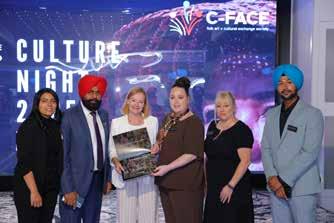
That’s why CentreBC is committed to supporting the cultural fabric of this province. When we invest in the arts and in cultural spaces, we’re not just supporting creativity—we’re supporting wellbeing, economic opportunity, education, and a sense of belonging.
We want to thank C-FACE for all it does to amplify voices, preserve traditions, and create space for artistic expression.

CentreBC nUM 27 julfeI nUM C-FACE dy sflfnf swiBafcfr rfq 'qy swiBafcfr aqy klf pRqI AusdI brkq dy leI pRÈMsf idwqI geI. kfirn ikrkpYtirk ny iesnUM Aus pfrtI dy qOr 'qy svIkfr krn 'qy mfx mihsUs kIqf jo swcmuc ieh mMndI hY ik swiBafcfr dI ÈkqI sfnUM iewkjut aqy Auwcf krn df sfmrQ hn.
CentreBC ivwc, asIN mMndy hF ik sMsikrqI koeI aMgITI nhIN hY—ieh ishqmMd aqy Pldfiek smfj df iewk kornrston hY. klf sfnUM afpxIaF khfxIaF dwsx, PrkF dy rfhIN juVn, aqy Auh smfj bxfAux
ivwc mdd krdI hY jo jIvMq, Èfiml krn vfly aqy mËbUq huMdy hn.
swiBafcfr Auh hY ijwQy asIN arQ Kojdy hF. ieh AunHF gfixaF ivwc hY jo asIN gFdy hF, AunHF khfxIaF ivwc jo asIN sFJIaF krdy hF, Auh Kfxf ijsnUM asIN iqafr krdy hF, aqy Auh qrIky ijs nfl asIN iekwTy huMdy hF - cfhy Auh jÈn ivwc hovy jF sMGrÈ ivwc. aqy ieh swiBafcfr dy rfhIN hY ik asIN socdy hF ik asIN kOx hF aqy socdy hF ik asIN kOx bxnf cfhuMdy hF. iesy leI CentreBC ies pRFq dI swiBafcfrk ZFcy dI shfieqf krn vfÜI pRiqbwD hY. jdoN asIN klf aqy swiBafcfrk sQfnF ivwc invyÈ krdy hF, qF asIN isrP rcnfqmkqf nUM nhIN shfieqf kr rhy - asIN BlfeI, afriQk mOky, iswiKaf aqy iewk sMvydnf dI shfieqf kr rhy hF.
asIN C-FACE df DMnvfd krnf cfhuMdy hF ijs df Xogdfn afvfËF nUM Auicq bxfAux, irvfjF nUM surwiKaq krn, aqy klf dy pRgtfvy leI sQfn bxfAux ivwc hY.

Author: Dr. Lakhbir K. Jassal
The Village of Harrison is delighted to share news of the grand opening of the Village Health Centre. This newly established clinic represents a significant step forward in local healthcare provision. As an extension of the services currently offered at the Agassiz Community Health Centre, Village Health Centre, is designed to better serve the needs of the community. The new clinic will reduce travel time for appointments, minimise transportation barriers for those with limited mobility, and improve access to essential healthcare services within the community of Harrison Hot Springs.
The grand opening event held on Tuesday, July 29th was a warm and welcoming occasion, featuring coffee and chats, a ribbon-cutting ceremony, and a walkthrough of the facility. The gathering served as a testament of the collaborative spirit that made this initiative possible.
Speaking on the occasion, Mayor Fred Talen expressed heartfelt gratitude for the partnerships and shared commitment that have brought this initiative to fruition:
lyKk: zf lwKbIr k jwsl

hYirsn df ipMz KuÈI nfl ipMz ishq kyNdr dy ivÈfl Kulfsy dI Kbr sFJf kr irhf hY.
ieh nvF sQfipq kilink sQfnk ishq syvfvF ivwc iewk mhwqvpUrn kdm df inrdf krdf
hY. ieh ipMz ishq kyNdr, agsËI kimAUintI
iËMmydfrI aqy sFJy sihXog df nqIjf hY. asIN
PryËr hYlQ, PryËr vYlI hYlQ kyar PfAuNzyÈn aqy agfsËI kimAUintI hYlQ kyNdr dI tIm duafrf pRdfn kIqI geI smrQn leI srIrk hF."
Fraser Health and Fraser Valley Health Care Foundation continue to demonstrate excellence in healthcare delivery and community support. If you would like to learn more about their work, or explore ways to support the Foundation’s efforts, please visit their respective websites for further information.
We look forward to welcoming the community into this new space and continuing our commitment to accessible, compassionate and community-focused care.
“the opening of the Village Health Centre is a meaningful step forward for our community. This new clinic is the result of partnerships and shared commitment to improving local access to health care. We are grateful for the support provided by Fraser Health, Fraser Valley Health Care Foundation, and the team at the Agassiz Community Health Centre”.

The Fraser Valley Health Care Foundation raises funds for vital equipment and programs funded or endorsed by the Fraser Health Authority. They serve the communities of Abbotsford, Mission, Chilliwack, Hope, Agassiz and Harrison Hot Springs.
Visit fvhcf.ca Call 604 851 4890
Email info@fvhcf.ca
ishq kyNdr ivwc mOjUd syvfvF df vfDf hY, ijs
df AudyÈ kimAUintI dIaF ËrUrqF nUM bihqr
qrIky nfl syvf dyxf hY. nvF kilink mulk dy
loVINdy lokF leI tRfvl df smF GtfAux, sIimq moibiltI vfilaF leI Xfqrf dy rukfvtF nUM
GtfAux, aqy hYirsn hft sipRMgË dy kimAUintI
ivwc afvÈk ishq syvfvF qwk phuMc ivwc suDfr
krn df kMm krygf.
mMglvfr, 29 julfeI nUM hoieaf Bਓਓਓ KuwlHx
df smfroh iewk grm aqy suafgq BrpUr mOkf
sI, ijs ivwc kOPI aqy gwl-bfq, irwbn-kwtx
dI smfroh, aqy shUlq df dOrf Èfml sI. ieh
smfgm ies gwl df surfg sI ik ieh pihlkdmI
sMXukq rUp ivwc ikvyN sMBv hoeI.
ies mOky 'qy boldy hoey, mYXr PRyz tyln ny sFJy sihXog aqy AunHF BfeIcfirk sFJF leI idloN Èuwkrfnf pRgt kIqf, ijhVIaF ies Auprfly
nUM pUrf krn ivwc shfieqf leIaF hn: "gFv
ishq kynF qy KolHxf sfzI kimAUintI leI iewk
mhwqvpUrk kdm hY. ieh nvIN kilink sQfnk
ishq syvfvF dI shUlq ivwc suDfr krn dI sFJI
PRyËr hYlQ aqy PRyËr vYlI hYlQ kyar PfAUNzyÈn ishq syvf aqy smUihk shfieqf ivwc Auwqmqf nUM idKfAuNdy rihMdy hn. jykr qusIN AunHF dy kMm bfry hor iswKxf cfhuMdy ho, jF PfAUNzyÈn dy XqnF df smrQn krn dy qrIky Kojxf cfhuMdy ho, qF ikrpf krky AunHF dy snFiDk vYbsfeItF 'qy jf ky hor jfxkfrI leI vyKo. asIN ies nvyN sQfn ivwc smudfiek nUM suafgq krn df bysbrI nfl AuzIk kr rhy hF aqy swiBafcfrk, dieaflu aqy smudfiek kyNdirq dyKBfl leI afpxI pRqIbwDqf nUM jfrI rwKx leI.
PryËr ivckfr ishq kurI PfAuNzyÈn PryËr ishq aiDkfr duafrf PMz kIqIaF jF prvfinq kIqIaF jrUrI Aupkrx aqy pRogrfmF leI PMz iekwTf krdI hY. ieh aYbtsPorz, imÈn, icwlIvYk, hop, agfÈIË aqy hYirsn hft isRMgË dy smudfeyaF dI syvf krdI hY.
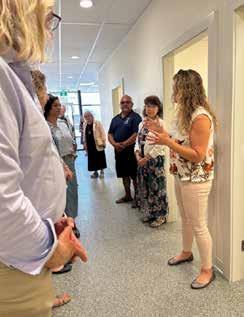

ZfzI
ipMz luhfrf ijLlHf luiDafxf nfl sbMDq bflk ZfzI aMgd isMG luhfrf awj dy smyN ivc ZfzI klf nfl sosLl mIzIaf Auqy cmkdy nvyN isqfry vjoN AuWBr irhf hY. aMgd isMG afpxI CotI Aumr dy bfvjUd, Zwz aqy sfrMgI vrgy rvfieqI sfjF rfhIN muhfrq rwKdf, ZfzI klf dI guMm ho rhI purfqn rvfieq nUM dubfrf surjIq krn leI BrpUr Xogdfn pf irhf hY.
aMgd isMG afpxI dmdfr avfjL aqy Bfvnfqmk pysLksLF nfl lwKF-kroVF sroiqaF dy idlF qy rfj kr irhf hY. aMgd isMG dI klf, jo ik nf isrP iswK ieiqhfs dI vfirs hY, sgoN BivwK dI ZfzI klf dI nvIN pirBfsLf vI hY.
aMgd isMG dy ipqf, sMsfr pRiswD ZfzI s[ sMdIp isMG luhfrf, jo ik amrIkf ivc afpxf ZfzI jwQf clf ky iswKI dI syvf kr rhy hn, ny afpxy dovyN puwqrF, aMgd isMG aqy krmn isMG nUM ies amIr swiBafcfr nfl joVn leI sLlfGfXog Auprflf kIqf hY. ieh gwl vDyry mfx vflI hY ik Auh amrIkf vrgy pwCmI dysL ivc rih ky vI afpxy bwicaF nUM iswKI aqy ZfzI klf nfl joV ky rwKx ivc kfmXfb hoey hn.
iehnF inwky ijhy bwicaF ivc ZfzI klf leI idlI lgfv aqy smrpx sfP idKfeI idMdf hY. s[ hrijMdr isMG Kflsf (ipMz luhfrf) dy poqry hox dy nfqy vI, aMgd isMG luhfrf, afpxy ipMz aqy pirvfr dohF df isr mfx nfl AuWcf kr irhf hY.

ieh vI ijLkrXog hY ik amrIkf dy keI
gurU GrF ivc ienHF bwicaF df snmfn kIqf
jf irhf hY. ieh drsfAuNdf hY ik ZfzI klf
isrP iek rvfieq nhIN, sgoN iek jIvMq sMskfr hY, ijhnUM ieh pirvfr pUry smrpx nfl awgy vDf irhf hY.
asIN afs krdy hF ik aMgd isMG luhfrf aqy krmn isMG luhfrf afpxy dfdf jI s[ hrijMdr isMG Kflsf (ipMz luhfrf), aqy ipqf ZfzI sMdIp isMG luhfrf dy nksLy kdmF qy cldy, pwCmI sMgIq dI cmk-dmk ivc vI afpxy rUhfnI rMg aqy ZfzI prMprf nUM kdy mwTf nhIN pYx dyxgy.
sMprk leI Pon nMbr : +12245397250 pwqrkfr –guirMdrjIq isMG nItf (mfCIky)
BfrqI kONslKfny dy aiDkfrI 9 agsq nUM aYbtsPorz
vYnkUvr siQq BfrqI kONslKfny dy aiDkfrI
kONslr syvfvF kYNp lfAux vfsqy 9 agsq
nUM gurduafrf sfihb Kflsf dIvfn susfietI
aYbtsPorz ivKy phuMc rhy hn. gurdu -
afrf sfihb Kflsf dIvfn susfietI dy muwK
ibRitsL kolMbIaf ‘c 5 sLihrF dy puils muKI pMjfbI




aYbtsPorz (gurdIp isMG gryvfl) ijlHf huisLafrpur dy kot PqUhI nyVly ipMz pMzorI
lwDf isMG dy jMmpl qy sMn 1950 ‘c kYnyzf afey sv[ rsLpfl isMG iZwloN pihly pMjfbI sn ijhVy rfiel kYnyzIan mfAuNitz puils ivc ispfhI BrqI hoey sn qy izptI sYirP dy ahudy qoN irtfier hoey sn aqy sMn 1990 ivc blqyj isMG iZwloN nUM rfiel kYnyzIan mfAuNitz puils ivc pihly dsqfrDfrI pMjfbI puils aiDkfrI bxn df mfx pRfpq

hoieaf. ies vyly kYnyzf Br ivc ijQy sYNkVy pMjfbxF aqy pMjfbI puils aiDkfrI vwK-vwK puils mihkimaF ivc sLfndfr syvfvF inBf rhy hn, AuQy ibRitsL kolMbIaf sUby dy 5 sLihrF dy puils muKI pMjfbI hn jd ik sInIar pMjfbx puils aiDkfrI vYNzI myht ibRitsL kolMbIaf aYsosIeysLn afP cIPs afP puils dy borz afP zfierYktrjL dI pRDfn hY. ijlHf mogf dy sqivMdr isMG ‘stIv’ rfey vYnkUvr dy puils muKI hn. ijLlHf sLhId Bgq isMG ngr dy sLihr bMgf dy dlbIr isMG ‘zyl’ mfxk ivktorIaf dy puils muKI hn jd ik ijLlHf mogf dy ipMz suKnMd dy hrijMdr isMG ‘hrjL’ iswDU zYltf dy aqy ksbf aOV nyVly ipMz mwlpur dy dyv cOhfn ircmMz dy puils muKI hn. suprzYNt hrimMdr isMG ‘hrm’ dusFJ lYNglI afr[sI[aYm[pI[ dy aPsr ieMcfrj hn.
mhfn ngr kIrqn 31 agwsq idn aYqvfr
sRI guru gMRQ sfihb j Idy 421 sflf pRkfsL
isMG mFzeI ZfzI aqy kwQf vfck puMhc rhy
srtIiPkyt, BfrqI pfsport irinAU krnf
qy pfsport srMzr srtIiPkyt, E[sI[afeI[ qy hor bhuq sfrIaF syvfvF pRdfn krngy.
syvfdfr rfijMdr isMG ‘rfjU’ iZwloN ny dwisaf ik BfrqI kONslKfny dy aiDkfrI 9 agsq idn sLincwrvfr nUM svyry 9 vjy qoN sLfm 5 vjy qwk lfeIP srtIiPkyt, puils klIarYNs
idhfVy nMU smripq gurduafrf sfihb
klgIDr drbfr aYbtsPorz vlo smUh
sfD sMgqF dy sihXog nfl mhfn ngr
kIrqn sjfey jfxgy agwsq 24 qo lY ky
sqMbr 4 qwk gurmq smfgm hoxgy ijnF
ivwc pMQ dy mhfn kwQf vfck igafnI
srbjIq jI luiDafxf rfgI jQf mihqfb
hn. smUh sMgqF nMU bynqI h Yik vwD qoN vwD
drsLn dy ky ngr kIrqn ivc sfml hovo.
DMnvfd
smUh gurduafrf pRbMDk kmytI
klgIDr drbfr aYbtsPorz
kYlgrI ( sqnfm isMG Zfa/ jsvMq isMG syKoN): arpn ilKfrI sBf vwloN ipCly idnIN
sdIvI ivCoVf dy gey nfmvr sfihqkfr sR[ kysr isMG nIr nimwq ÈrDFjlI smfgm
26 julfeI nUM tYNpl kimAUintI hfl ivKy kIqf igaf. zf[ jogf isMG shoqf, ÈRImqI kuldIp kOr GtOVf aqy zf[ syvf isMG pRymI ny sdfrq kIqI. Kwcf Kwc Bry hfl ivc AunHF
dIaF ÊËlF aqy nËmF dI pyÈkfrI rfhIN
ÈrDFjlIaF idwqIaF geIaF. jgdyv iswDU ny kfrvfeI ÈurU kridaF hI surjIq pfqr dIaF
ienHF sqrF nfÜ smfgm dI idÈf inrDfrq kr idwqI ‘jdoN qwk lÌË ijAuNdy ny suKnvr
ijAux mr ky vI, Auh kyvl ijsm huMdy ny jo
isivaF ivc suafh bxdy’.
jsvMq isMG syKoN ny afpxI ilKI kivqf
kvIÈrI rMg ivc ÈrDFjlI idwqI. zf[ mnmohn bfT, suKivMdr qUr, jrnYl qwgV, suKmMdr igwl, hrimMdr pfl isMG aqy zf[ jogf isMG shoqf ny nIr dIaF ÊËlF dI gfiekI
nfÜ drÈkF nUM sMmoihq kIqf. hryk ny ÊËlF nUM afpxy invykly lihjy aqy kmfl dy aMdfË ivc pyÈ kIqf aqy hryk vMngI ny drÈkF nUM vwKrf srUr idwqf. qrlocn sYNhbI dI bulMd afvfË ny gfiekI df jfdU ibKyr idwqf. sYNhbI ny afiKaf ik Auh nvyN ilKx vfiÜaF nUM hmyÈf
AuqÈfihq krdy sn, ijMnHf ivcoN mYN vI iek
hF. srdUl isMG lwKf ny ikhf ik nIr sfihb jgrfAuN sfihq sBf dI bgIcI df tIsI df byr sI. jgrfAuN sfihq sBf leI nIr sfihb df bhuq vwzf Xogdfn irhf. jsvIr ishoqf ny afpxIaF kivqfvF rfhIN nIr dI ÈÉsIaq
nUM Aujfgr kIqf. surjIq isMG hyar, zf[ syvf isMG pRymI, svrn isMG DfÜIvfÜ aqy

gurcrn kOr
iQMd ny nIr
nfl ibqfey
smyN nUM Xfd
kridaF ikhf
ik Auh aduqI
ÈÉsIaq sn
jo afpxIaF
ilKqF rfhIN
amr rihxgy.
AunHF ny nIr
duafrf smfj

syvf, aiDafpn, jnqk GoÜF aqy sfihqk
Kyqr ivc pfey mhwqvpUrn Xogdfn bfry KuwlH
ky ivcfr rwKy.
sqnfm Zfa ny nIr sfihb bfry ivcfr pyÈ
kridaF afiKaf Auh arpn ilKfrI sBf
dy moZI sn. sfnUM ies gwl df mfx hY ik
kYlgrI dy sfihqk BfeIcfry ivcoN iekwly hI
aijhy sfihqkfr sn ijnHF nUM ÈRomxI pMjfbI
sfihqkfr (ivdyÈI) BfÈf ivBfg pMjfb df
purskfr imiÜaf. AunHF ipCly AuxwqI sfl qoN
iekwTy ivcrn dIaF XfdF sFJIaF kridaF
afiKaf ik nIr sfihb aMdroN bfhroN ieko
sn aqy bVy diraf-idl iensfn sn. iksy ny ikhf hY ik jykr mrn qoN bfad ijAuNxf
cfhuMdy ho qF koeI kMm aijhf kr jfAu qF
ik lok quhfnUM Xfd rwKx jF Pyr ilK aijhf
jfAu ik lok quhfnUM Xfd rwKx. so nIr sfihb
ny dovyN kMm kIqy hn. ienHF dy aiDafpn smyN
kIqy kfrj aqy ÈfierI awj dy hnyiraF ivc
iek roÈnI dI ikrn vFg cmkdI rhygI lok
hmyÈf AunHF nUM Xfd rwKgy.
azimMtn qoN afeI kysr isMG nIr dI spuwqrI jsjIq kOr BMvrf aqy kYlgrI qoN byty
arÈdIp ny ikhf ik pirvfr dy sfry jIaF
dI kfmXfbI ivc sfzy ipqf jI dI bhuq vwzI
dyx hY. BMvrf ny afiKaf ik ijQy nIr sfihb
dy aiDafpk XUnIafn smyN GroN bfhr rih ky lok-ihqF leI sMGrÈ krn aqy jyÜH XfqrfvF smyN afpxI mfqf kuldIp kOr GtOVf dy idwqy sihXog aqy bwicaF dI dyK-Bfl krn dy Xogdfn dI vI gwl kIqI. bwcy armfn, vfxI aqy ieÈtpRIq ny nIr dy ilKy bflsfihq ivcoN bfl-kivqfvF, jo bwicaF nUM cMgI
syD aqy pVHn leI AuqÈfihq krdIaF hn, suxfeIaF. sroiqaF vwloN qFÜIaF nfl bwicaF nUM ÈfbfÈy nfl invfijaf. kuldIp
kOr GtOVf ny nIr sfihb nfl ibqfeI Èfndfr iËMdgI dIaF kuJ qPsIlF sFJIaF kIqIaF. sroiqaF nUM Bfvuk kr idwqf. sroiqaF/ drÈkF duafrf iek-mn iek-icwq ho ky sunxf aqy qfVIaF nfÜ BrpUr huMgfrf Brnf smfgm dI ÈoBf ivc vfDf kr igaf.
aKIr ivc pRDfn zf[ jogf isMG shoqf ny vwK vwK sfihqk, smfijk aqy BfeIcfrk jQybMdIaF dy Èfml hoey mYNbrF df DMnvfd kridaF ikhf ik awj sfzy Èihr ivc bhuq sfry smfgm hox dy vfbjUd ivc eynI vwzI igxqI ivc hfËr hoxf ieh drsfAuNdf hY ik kysr isMG nIr df sfzy BfeIcfry ivc ikMnf siqkfr sI.
pRDfn zf[ jogf isMG ny cfh pfxI dI syvf leI bIbI suKdyv kOr Zfa aqy ÌotogRfÌI dIaF syvfvF leI pMjfbI aÉbfr dy aYzItr hrbMs isMG buwtr, bldyv isMG Zfa aqy dljIq isMG hUMJx df spYÈl DMnvfd kridaF ieh afiKaf ik awj dy ies smfgm dI kfmXfbI df ishrf sBf dy inrsuafrQ vlMtIarF dy isr hY, Éfs krky sR[ jgdyv isMG iswDU aqy lKivMdr isMG jOhl dy isr hY, ijnHF ny ies smfgm nUM nypry cfVn leI
axQk imhnq kIqI. jgdyv isMG iswDU ny
styj dI iËMmyvfrI bfKubI inBfAuNidaF nIr
dIaF XfdF aqy ÊËlF dy ÈyarF nfl sroiqaF
nUM afpxI imknfqIsI klf nfl kIlI rwiKaf, ieh smfgm XfdgfrI smfgm ho inbiVaf.






















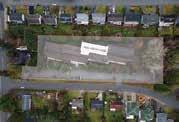

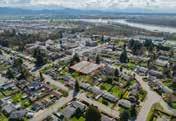



More communities in B.C. will have access to free adult literacy programs to improve basic writing, reading, math and digital skills, which will unlock new opportunities for people and help build a stronger, more resilient workforce.
The Province invests $3.4 million annually to support the Community Adult Literacy Program. This program plays an essential role in providing basic literacy to adults, families and Indigenous communities by helping people gain life skills, secure better jobs, access further education and participate more actively in their communities.
The Community Adult Literacy Program is funded on a two-year cycle. The 202526 funding supports the first year of the 2025-27 funding cycle. The 2025-26 pro-
gram year runs from Sept. 1, 2025, until Aug. 31, 2026.
In 2025-26, the Community Adult Literacy Program will support 96 literacy programs delivered by 67 providers in 204 B.C. communities, a 55% increase from 132 communities in 2024-25.
To meet the diverse needs of adult learners, these literacy programs offer one-onone tutoring, small group sessions and drop-in services, and may be delivered in-person or online.
The Community Adult Literacy Program is a key part of the Province’s commitment to making post-secondary education more affordable and accessible. It also plays a vital role in developing a skilled workforce that supports and strengthens B.C.’s growing economy and positions B.C. as a leader in the new and emerging economy.
The Province is broadening access to the free, publicly funded human papillomavirus (HPV) vaccine and simplifying the immunization schedule, ensuring more people in B.C. have the protection they need against HPV-related cancers.
“The HPV vaccine is a powerful tool to protect health and prevent cancer,” said Josie Osborne, Minister of Health.
“By expanding free access and making it easier for people to get immunized, we’re taking another meaningful step forward in our 10-year Cancer Action Plan – reducing cancer rates and improving health outcomes for people across British Columbia.”
Following guidance from the National Advisory Committee on Immunization and provincial immunization experts, the government is streamlining the immunization process for HPV.
Starting Thursday, July 31, 2025, the HPV vaccine schedule will shift from two doses to one dose for people age nine to 20. People 21 and older will be eligible for a two-dose series, with six-months between doses. Individuals who are immunocompromised will continue to need a three-dose series.
With this change, the Province is expanding eligibility for B.C.’s publicly funded HPV immunization program to include all people 19 to 26, plus people 27 to 45 who are living with HIV or who self-identify as belonging to the gay, bisexual, questioning, Two-Spirit, transgender and non-binary communities.
Those who have undergone post-colposcopy treatments on or after July 31, 2025, are eligible to get the vaccine at any age. A colposcopy is a procedure to check for abnormal areas on the cervix and vagina.
The HPV vaccine will continue to be offered through voluntary, schoolbased immunization clinics starting with students in Grade 6 and through multi-grade catch-up clinics, as well as in some community pharmacies for those who may have missed their dose. Other eligible people can get the vaccine from some pharmacies, sexually transmitted infection clinics, publichealth units, primary-care providers or a community-health nurse. People living in First Nation communities can contact their community health centre or nursing station to book an appointment.
“B.C.’s community pharmacists are proud to be an accessible provider of vaccines for British Columbians living in communities, large and small,” said pharmacist Colleen Hogg, chair of the BC Pharmacy Association. “Pharmacists are one of the top immunizers and are there for patients when they need us.”
This initiative is a part of B.C.’s 10year Cancer Action Plan to better prevent, detect and treat cancers, and to deliver improved care for people facing cancer now, while preparing for growing needs of the future.

awj, hYrItyj kfrpyt aYNz PloirMg
aYbtsPorz dy hfl ivKy, pMjfb dy pRmuwK rfjnIiqk nyqfvF dy nfl-nfl smfijk aqy Dfrimk KyqrF dIaF siqkfrq ÈKsIaqF dy nfl iewk BfeIcfrk iekwT df afXojn kIqf igaf.
ies smfgm ivwc sfbkf ivDfiek s[ kulbIr isMG ËIrf, PrIdkot pRdyÈ kFgrs dy iËlHf pRDfn nvdIp isMG bfbU brfV aqy idwlI iswK gurduafrf kmytI duafrf inXukq Drm pRcfr kmytI pMjfb dy cyarmYn s[ mnjIq isMG Bomf ny iÈrkq kIqI.
bulfiraF ny afpxI PyrI dOrfn kYnyzf dy skfrfqmk pihlUaF nUM Aujfgr kIqf pr nfl hI pMjfb ivwc nOjvfnF dI igrfvt aqy ivdyÈ jfx vwl AunHF dy vDdy ruJfn bfry icMqf vI pRgt kIqI. AunHF ny ienHF cuxOqIaF dy ZukvyN hwl lwBx dI loV 'qy Ëor idwqf.
s[ kulbIr isMG ËIrf ny pMjfb dy muwK mMqrI nUM nOjvfnF nUM kurfhy pYx qoN bcfAux leI niÈaF aqy iBRÈtfcfr ivruwD sÉq kfrvfeI krn dI apIl kIqI.
nvdIp isMG bfbU brfV ny hfËr sfiraF nUM apIl kIqI ik Auh pMjfb ivwc afpxy pirvfrF nUM hor ruwK lgfAux aqy mnuwKqf nUM bcfAux leI kMm krn leI AuqÈfihq krn
qF jo pMjfb dI pCfx nUM surwiKaq rwiKaf jf sky.
s[ mnjIq isMG Bomf ny kYnyzf ivwc rihMdy
pirvfrF nUM iswKI nfl juVy rihx, gurU sfihb
dIaF iswiKafvF dI pflxf krn aqy afpxy bwicaF nUM gurbfxI nfl juVy rihx leI pRyirq kIqf.
ies mOky sI Pys sosfietI dy sMsQfpk, kvljIq isMG mfnfvflf ny styj dI kfrvfeI df sMcfln kIqf, hryk mihmfn nUM siqkfr nfl swdf idMdy hoey pMjfb pRqI afpxy ipafr nUM drsfAuNdIaF BfvpUrn kivqfvF vI suxfeIaF.
ivÈyÈ mihmfnF ivwc sI Pys sosfietI dy zfierYktr BuipMdr isMG lwDV, aMimRq pfl isMG Zot, mYzIsn PlYÈr, aqy lIËf PlYÈr, siqkfrXog BfeIcfry dy mYNbr rfjf igwl, arÈ klyar, ryÈm isMG brfV, rxDIr isMG KMgUVf, jgrUp jOhl, mnjIq sMDU, mnjIq iswDU, jsvIr isMG mwlHI, qnvIr brfV, suKdyv isMG syKoN aqy hor bhuq sfry Èfml sn.
aMq ivwc, ÈRI kMT mogulflf (hYrItyj kfrpyt aYNz PloirMg dy mflk aqy sI Pys sosfietI dy zfierYktr) ny pRym isMG dy nfl iml ky sfry hfËrIn df idloN DMnvfd kridaF inwGf svfgq kIqf.

Today, at the hall of Heritage Carpet & Flooring Abbotsford, a community gathering was organized with prominent political leaders from Punjab, as well as respected personalities from the social and religious fields.
The event was attended by former MLA S. Kulbir Singh Zira, Faridkot PPCC District President Navdeep Singh Babu Brar, and Chairman of Dharam Parchar Committee Punjab, S. Manjit Singh Bhoma, appointed by the Delhi Sikh Gurdwara Committee.
Speakers highlighted the positive aspects of Canada during their visit but also expressed concern about the decline of youth in Punjab and their increasing inclination towards moving abroad. They emphasized the need to find proper solutions to these challenges.
S. Kulbir Singh Zira urged the Chief Minister of Punjab to take strong action against drugs and corruption in order to save the youth from going astray.
Navdeep Singh Babu Brar appealed to everyone present to encourage their families back in Punjab to plant more trees and work towards saving human-

ity so that the identity of Punjab can be preserved.
S. Manjit Singh Bhoma inspired families living in Canada to remain connected with Sikhi, follow the teachings of Guru Sahib, and guide their children to stay attached to Gurbani.
On this occasion, C FACE Society Founder, Kawaljit Singh Manawala, conducted the stage proceedings, inviting each guest respectfully while also reciting soulful poetry reflecting his love for Punjab.
Distinguished guests included C FACE Society Directors Bhupinder Singh Ladhar, Amrit Pal Singh Dhot, Madison Flascher, and Liza Flascher, along with respected community members Raja Gill, Arsh Klair, Resham Singh Brar, Randhir Singh Khangoora, Jagrup Johal, Manjit Sandhu, Manjit Sidhu, Jasvir Singh Malhi, Tanveer Brar, Sukhdev Singh Sekhon, and many others.
In conclusion, Sri Kanth Mogulala (Owner of Heritage Carpet & Flooring and Director of C FACE Society), together with Prem Singh, warmly welcomed all attendees with heartfelt gratitude.


In the spirit of continued teamwork and collaboration, the City of Mission and the Mission Public School District No. 75 have renewed their joint use agreement.
The agreement is a formal partnership between the City and School District that outlines how the two parties will work together to help ensure:
The community has access to book facility spaces within the City or the School District at a reasonable cost
Information is shared on all current and future planning and development projects so both parties can proactively
prepare for the needs of a growing community
Strong communications and engagement protocols, including a mutual desire to consult with the other party on future plans
Joint participation in capital projects and facility projects where it makes the most sense, and more
“The Board of Education is pleased to announce the renewal and update of the Joint-Use Agreement with the City of Mission,” said Mission School Board Chair Tracy Loffler. “This important agreement strengthens the ongoing
long-term partnership between Mission Public Schools and the City of Mission. It supports greater shared access to both school district and city facilities, creating enhanced opportunities for community use. The renewed agreement is designed to directly benefit Mission students and the community.”
Both members of Council and the School Board, along with their respective staff, crafted the new agreement to strengthen partnership opportunities.
“This agreement reflects what we’ve long known to be true in Mission: we accomplish so much more when we
work together,” said Mayor Paul Horn. “By sharing facilities, we not only make the most of what we have, but we also open doors for more affordable and accessible opportunities for residents to connect, play, and grow.”
“Programs like Club Kids show what’s possible when we share resources and collaborate. This agreement is another important step toward a more integrated, community-centered future. We are constantly in communication and are seeking more opportunities to serve our community better, and to advocate for improved facilities.” he continued. The agreement is active until 2029.
More than 16,000 people of South Asian heritages in British Columbia have provided input for a provincial museum that educates, preserves and celebrates the richness of Canadian South Asian histories, traditions and cultures.
“The broad participation from British Columbians of South Asian heritages demonstrated how important it is for communities to see their cultures and stories reflected and recognized in a museum,” said Anne Kang, Minister of Tourism, Arts, Culture and Sport. “I want to express my gratitude to both individuals and organizations for their time and the thought put into their contributions. We heard that it’s important to these communities to protect and pass down their traditions, languages and histories through a museum. We are committed to continuing to work with these communities on next steps.”
The Province recently concluded a 12-month engagement to explore the diverse range of perspectives for a vision of a museum and then reported what are shared values and what is unique and distinctive between and within communities’ visions.
“South Asian communities have long contributed to shaping the vibrant, diverse and welcoming B.C. we know today,” said Amna Shah, parliamentary secretary for anti-racism initiatives, mental health and addictions. “As an immigrant of South Asian heritage, I know how meaningful it is to have a place where our history is preserved, celebrated and shared. I am grateful to everyone who participated on the engagement and look forward to continuing our collaboration to create a space that honours our diverse backgrounds.”
Feedback from engagement participants described a museum that serves both Canadians of South Asian heritages and those looking to learn and experience said heritages and cultures.
Participants said the museum should acknowledge and celebrate the many cultures, events and holidays of Canadians of South Asian heritages and encourage community connections.
Participants also noted the opportunity to increase understanding about the struggles, contributions and progress of people of multiple South Asian heritages as they have settled in the province.
The engagement included a public survey, online submissions, community-hosted conversations, youth engagement, one-on-one discussions and targeted engagement. The targeted engagement ensured a broad range of voices were captured from smaller
heritage groups as well as subjectmatter experts, such as academics and museum professionals. The Province provided $500,000 to help communities organize engagement sessions and report on the input. In total, 46 organizations helped to hold 145 engagement sessions.
The What We Heard report reflects the visions and ideas of the community for a provincial museum. The report is available online.
While the term South Asian is globally recognized, it is not a term that all communities feel is representative or respectful, a sentiment that is getting increased support. The report includes some terms that were suggested by participants during the engagement. The term South Asian continues to be used as a placeholder only.
bMn ky rwKVI
ajYb isMG ilwdV
604 825 3131
KuÈIaF dy nfl BYx vIr df hwQ afpxy
hwQ ivwc PVdI af
guwt dy Auwqy bMnH ky rwKVI suwK sdf hI
mMgdI af
lflc nf mYnUM iksy cIË df BYx ieh
afK suxfAuNdI af

vsdf rhy sdf suwKI qUM vIrf BYx ardfsF krdI af
BYx Brf jd hwsx Kyzx mfipaF nUM cMgf lwgdf hY
KuÈIaF dy ivwc idn lMG jfvx sfrf jwg hI hwsdf lwgdf hY
shury Gr ivwc bYTI BYx vI rihMdI vIrF dy rfh qwkdI af
vsdf rhyN sdf suwKI qUM vIrf BYx ardfsF krdI af
bcpn dy ivwc rwKVI dy idn df ivafh ijMnf cfa huMdf sI
jd kdy inwkI ijhI gwl qoN afps ivwc lV pYNdy sI
inafVy vfilaF vwzI BYx jd mF dy vFg smJfAuNdI af
vsdf rhyN sdf suwKI qUM vIrf BYx ardfsF krdI af
idn rwKVI vfly nUM ajYb AuzIky bih ky BYx ipafrI nUM
afAudI idsdI BYx jdoN KuÈI huMdI pirvfr hY sfry nUM
bYT ivhVy ivwc mMjy Auwqy bcpn dIaF gwlF krdy af
vsdf rhyN sdf suwKI qUM vIrf BYx ardfsF krdI af
vsdf rhyN sdf suwKI qUM vIrf BYx ardfsF krdI af

blivMdr ‘bflm’ ENkfr ngr, gurdfspur (pMjfb) mo[ 98156-25409
PuhfrF dy suhfxyN pb Dry brsfq df mOsm |
cmkdI rOÈnI jMnq kry brsfq df mOsm |
ivXogI vydnf rock suGV sMXog dI afÈf,
prHF jf ky, glHoN lih ky mry brsfq df mOsm |
mDur mlhfr irmiJm qy suhfxI pvn nUM ijwqky,
qyrI cuMnI jy lihrfvy zry brsfq df mOsm |
isrP iek CotI ijhI bwdlI bVf siqkfr krdI hY, qdy hI aFvdf myry Gry brsfq df mOsm |
ndI nd nfilaF aMdr, phfVF dy AulfrF ivc,
kdI eyDr kdI EDr qry brsfq df mOsm | suhfgx ho ky jd klIaF krn isMdUr dI Ausqq,
cmn dI mFg ivc ÉuÈbU Bry brsfq df mOsm |
qyry sfhF dI ikiraf qoN, qyry iqÙMJx dy jfdU qoN,
qyry bs iek ieÈfry ‘qy hry brsfq df mOsm |
duKFqI ibjlIaF dy hfdsy tkrfv bwdlF dy,
Blf ikMnf ku icr sdmy jry brsfq df mOsm |
Drq dy sIny jd qpÈ, huMms, qpn vD jfey,
imhrbfnI dy aflm ivc vrHy brsfq df mOsm |
lukf ky apxI JolI ivc svfqI bUMd dI agnI,
cVHf ky swqrMgI pING Try brsfq df mOsm | anykF iksm dy ny Pl qy PuwlF dI sugMDI hY,
Auqyijq Bfvnf pUrI kry brsfq df mOsm | pkOVy cfh jlybI mfl pUVy KIr dy Ëfieky, svfdI qwq lfrF ivc Bry brsfq df mOsm | kdI sfnUM vIN apxI byVI dy ivc nfl lY jfvIN, ik ‘bflm’ qyry diraf dy prHy brsfq df mOsm |

jyT mhIny ivc hr iek rfsLI df Pl :
myK : ishq TIk rhy, afriQk lfB pr Krc ivsLysL hovy, imwqr bMDU suwK, CwqrU hfvI, iesqrI pwKoN lfB, sMqfn pwK sLuB, rog aqy cot df zr, sLnI df dfn kro. julfeI 19,20,27,28,30, agsq 7,8 asLuB.
ibRK : ishq TIk nf rhy, Dn hfnI, afmdn qoN Krc ijLafdf, bMDU suwK, sMqfn ksLt, nvIaF XojnfvF ivc rukfvtF pYdf hox, iesqrI ksLt, kfrobfr ivc qrwkI. julfeI 21,22,29,30, agsq 1,9, 10,11 asLuB.
imQun : ishq TIk rhygI, kfrobfr TIk rhy, Dn aqy pirvfr suK, bMDU suwK, jfiedfd df JgVf, pqI-pqnI df JgVf, ksLt, zr, sMqfn pwK sLuB, iesqrI suwK. julfeI 15,16,23,24, agsq 2,3,12,13 asLuB.
krk : ishq TIk, mn pRsMn rhygf. kfrobfr ivc lfB, Dn suwK pRMqU jfiedfd ivc JgVf kfrx bxy. hfnI qy zr, bMDU ksLt, iesqrI pwKoN sLuB. julfeI 17,18,25,26, agsq 4,5,6,14,15 asLuB.
isMG : ishq TIk,pirvfrk JgVf, nyqr rog, imwqr-bMDU suK, sMqfn qoN KusLI, kfrobfr ivc lfB, iesqrI pwK sLuB. julfeI 19,20,27,28, agsq 7,8 asLuB.
kMinaf : srIrk suwK, rog zr, kfrobfr mwDm, sMpqI ivvfd, XojnfvF ivc sPlqf, sMqfn suK, iesqrI ksLt, sLnI-mMgl df dfn kro. julfeI 21,22,29,30, agsq1,9,10,11 asLuB.
qulf : ishq TIk,pirvfrk JgVy, Dn lfB, ksLt, imwqr-bMDU suwK, sMqfn pwKoN suwK, kfrobfr ivc rukfvt, iesqrI pwK sLuB. julfeI 15,16,23,24, agsq 2,3,12,13 asLuB.
ibRsLick : ishq TIk,Drm-krm ivc mn lwgy, Dn lfB, GrylU JgVy hwl hox, sMpqI lfB, sMqfn suK, iesqrI pwK sLuB, kfrobfr ivc rukfvt. julfeI 19,20,27,28 , agsq 4,5,6,14,15 asLuB.
Dn : ishq Krfb, iesqrI pwKoN lfB, Brf df suK, sMpqI lfB, sMqfn suK, mfnisk ksLt, XojnfvF ivc sPlqf imly, kfrj Kyqr ivc lfB vDy. julfeI 19,20,27,28, agsq 7,8 asLuB.
mkr :, ishq TIk, iesqrI suK, mn pRsMn rhy, sMpqI aqy Dn hfnI, imwqrF df sihXog nf imly, sLwqrU kmjLor, kfrobfr TIk rhy. julfeI 21,22,29,30, agsq 2,3,12,13 asLuB.
kuMB : srIrk ksLt, sMpqI suwK, mn asLFq, Dn aqy pirvfr suK, Brf df suK, lfB, sMqfn icMqf, iesqrI suK ivc kmI, swt df zr, kfrobfr ivc rukfvt. julfeI 15,16,23,24, agsq 2,3,12,13 asLuB.
mIn : ishq Krfb, iesqrI ksLt, sLnI-mMgl df dfn kro. bMDU-suK, sMpqI ivvfd sulJx, sMqfn pwKoN KusLI, kfrobfr TIk. julfeI 17,18,25,26, agsq 4,5,6,14,15 asLuB.
not : joiqsL rfsLI qy agly BivwK qy gRih cfl puwCx leI 604-751-0220 qy sMprk kro.


Be cautious about what you bring to an end or the way in which you go about winding something up, especially if you think it will open up more choices. The situation will have to be revisited mid April next year. Other things would have changed by then. It might be wiser to let things take their own course right now.


Something that started off as a small thing when it comes to helping out somebody else that seems to keep on growing would be best dealt with now, especially if it is turning into a habit or interfering with your regular routines. It has probably taught you to take more notice of what is important to you, rather than getting distracted..

New directions involving other people can be smooth running if things are done their way. While there might be a lot in common, their determination might clash with yours. If you have been attempting to come to an agreement, this might need to be left for now and revisited mid April as things will likely have changed by then.
Something is winding up on a personal level perhaps in ways you were not expecting that is generating thought of all sorts of possibilities in the long term. Someone can play a powerful role here. However it is to eventually settle will not become evident until January to April next year. Meanwhile just go with the flow.

You can have success in getting something out of the way that has been on your mind for a while but the energy just hasn’t been there. Not that you will feel overly energised just yet. It is more a realisation that time is running out. You know you will feel a lot better once this is done, especially if others have a good view of it.

Something needs to be put into place once and for all so that you know what needs to be spent rather than other things coming up all the time. Whatever you do now can create changes that may not be fully implemented until next year, between January and April. You need to be straightforward and practical with any discussions.


There can be a willingness to let something go that has been a personal priority but doesn’t fit well with someone else. It will be more important to establish underlying stability in situations involving others. This can be temporary as other opportunities to focus on your wishes will arise next year from January to April. Patience can pay off.
The New Moon this week occurs in your sign providing you with the opportunity to generate changed directions on a personal level. Anything that has not been heading in the direction you had hoped might be better let go right now. Becoming more practical can appeal to you, especially when it comes to stability with finances.

There can be new directions building up in the background that will provide the opportunity to put a stable foundation in place. This is likely tied into the decisions of somebody else and something may need to wind up so they can take the next step. There could be more than one stage of development attached to this as well.

Changes in somebody else’s life may make you realise things are moving on and it will not be the same for you. This is encouraging you to think about what is important to you. It can actually be freeing you up to do so. This is a first stage. New people can come into your life, especially from January to April next year.

It might be time to develop a new attitude when it comes to commitments or obligations in your life, especially if they affect your finances. If you have accepted things without thinking, you could recognise this has to stop. This can only happen when you take the time to analyse what you can realistically manage and follow through.
New possibilities in the long term can begin to feel more probable or realistic. This could leave behind a level of personal doubt or insecurity. This can be tied to you becoming more aware of what has been important for a long time but needs to be modified in some way for the future. The second stage can occur January to April next year.


Govt. Certified

Are you looking to expand your reach and connect with more customers? Advertise with The Patrika on our popular social media platforms!
Wide Reach: Tap into our growing audience on Facebook, Instagram, and our website.
Engaging Content: Your ads will be seen alongside our top stories and engaging content.
Targeted Campaigns: Tailor your message to reach your ideal customers. What We Offer:
Facebook Ads: Connect with our active community and drive traffic to your business.
Instagram Promotions: Capture attention with visually stunning ads. Website Banners: Get prominent placement on our high-traffic website.
Sign up now and get a 20% discount on your first month of advertising! Ready to boost your business? Contact us today to get started!
Phone: 604-852-2288
E-mail: Ronnie@patrika.ca www.patrika.ca
Facebook: The Patrika
Instagram: thepatrikamedia
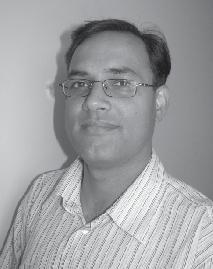






Vancouver Coastal Health (VCH) is committed to providing safe, quality and timely long-term care for residents, their families and the broader communities we serve.
As a reflection of that commitment, VCH has launched a competitive Request for Qualifications (RFQ) process for the replacement of Hilltop House in Squamish.
The replacement of Hilltop House, which is proposed for 42000 Loggers Ln. in
Squamish, was initially announced in September 2024. The new Hilltop House will be designed to create a more home-like environment for residents, with a care model that includes small group living arrangements, private bedrooms and bathrooms, and shared spaces for dining, recreation, and outdoor access. The new site will be built, owned, and operated by VCH.
Construction timelines will be confirmed once procurement is complete, with the
bid process expected to conclude by spring 2026.
In addition, VCH has initiated an RFQ process to help explore opportunities for increased long-term care capacity at 525 Clyde Ave. in West Vancouver, the former location of the Capilano Care Centre. This proposed site is anticipated to have a minimum of 210 long-term care beds.
VCH looks forward to working with local partners to advance both projects, which
will require further planning, approvals and community engagement prior to development.
Vancouver Coastal Health is committed to delivering exceptional care to 1.25 million people, including the First Nations, Métis and Inuit in our region, within the traditional territories of the Heiltsuk, KitasooXai’xais, Lil’wat, Musqueam, N’Quatqua, Nuxalk, Samahquam, shíshálh, Skatin, Squamish, Tla’amin, Tsleil-Waututh, Wuikinuxv, and Xa’xtsa.
Businesses across every industry are taking a longer-term view of how they operate. Sustainability has become a bit of a buzzword for large businesses, but for farmers it’s always been an essential consideration. Avoiding soil fatigue and erosion, minimizing water use and producing more with less takes a willingness to innovate that’s always been a key asset of Canadian farmers.
Farms are getting smarter. Farmers are embracing the newest technology to help them produce larger yields with fewer resources. Some are AI-powering their strategic planning, using data models to better set out planting, watering, pest control and harvesting schedules.
The data for those platforms comes in via sensors placed out in the field, on equip-
ment or in buildings, that also let farmers monitor conditions across their business in real time and react more efficiently to problems as they come up.
New crops are fueling farm sustainability. Crop development has always been an important aspect of Canada’s farm industry—Canola was a Canadian invention that took careful breeding and a scientific approach. That tradition continues with new crops serving as biofuels, helping the agriculture sector, and industry at large, reduce its dependence on fossil fuels.
Farmers are reaping the benefits of strategic planning. More farmers are taking a strategic approach to managing their business, from their seed stock to their balance sheets. For instance, scenario planning
can help a farm better weather storms, flooding or drought.
“Many farmers are taking advantage of resources geared to their businesses through available partnerships,” says Lorna McKercher, national director, agriculture at RBC. “They’re reaching out to get risk management advice and financing options that can help their farms operate for generations to come.”
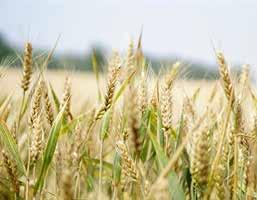
By taking a strategic, forward-thinking approach, farmers are helping ensure their businesses—and the food they pro-
duce—are sustainable and available for Canadians in the long term.
The City of Abbotsford is now accepting nominations for three annual civic recognition awards: the Order of Abbotsford, the Community Champion Achievement Award and the Community Recognition Award. These awards honour individuals and/or groups who have made exceptional contributions to the community, achieved significant lifetime accomplishments, or have demonstrated outstanding service community service.
The Order of Abbotsford is awarded to an individual who has demonstrated a particularly high level of contribution or length of service to Abbotsford and its residents, and who has brought distinction
to themselves and the community through outstanding achievements in a variety of areas, including but not limited to: culture, public or community service, the environment, business, heritage conservation, and sports. Recipients of the Order of Abbotsford have their names recorded in the Order of Abbotsford Merit Book, which is maintained by the Office of the Mayor. The 2024 recipient was celebrated musician and conductor, award-winning music teacher and dedicated cultural collaborator, Dr. Calvin Dyck.
The Community Champion Achievement Award is given to an Abbotsford individual, group, or organization who
has achieved National or International recognition in a variety of areas, including, but not limited to: academia, sports, arts, and culture; or performed a noteworthy deed which is considered of benefit to the community. A recipient of the Community Champion Achievement Award will have their name engraved on a paving stone that will be placed along the city-wide Discovery Trail within Abbotsford’s Community Champions pavilion. Last year’s Community Champion Achievement Award went to championship wrestler, dedicated coach and generous philanthropist, Jasmit Singh Phulka.
The Community Recognition Award is given to an individual, team or group who has provided a service and/or contribution which has benefited the Abbotsford community. The most recent Community Recognition Award was given to the 2023 BC Seniors Games Directors in appreciation of their dedication and commitment to the outstanding success of the Abbotsford 55+ BC Summer Games.
Nominations may be submitted online, or in person at City Hall until September 5. Recipients of the 2025 awards will be recognized by Abbotsford’s Mayor and Council at a ceremony in Fall 2025.

For the over 600,000 Canadian children under 18 who have allergies to food and insect bites, staying safe at school starts with knowing how to speak up.
“We often underestimate kids,” says Dr. Miriam Hanna, a paediatric allergist. “Even in kindergarten, kids with allergies can start understanding what’s safe and how to ask for help.”
At home, parents can build that confidence by practicing simple phrases like, “No thank you, I have an allergy,” or, “Can
you check the ingredients?” Role-playing real-life situations, like snack time or birthday parties, helps children respond calmly and clearly.
As they grow, many kids learn to know their allergens by name, identify unsafe foods and understand what an allergic reaction feels like. Dr. Hanna recommends introducing the EpiPen early. “They don’t need to be afraid of it,” she says. “Teach them what it does, when it’s used, and practice with a trainer.”
Older children may carry their own EpiPen at school. They should understand how to use it, and know that it's okay to ask an adult for help if they feel unsure or unwell.
Sharing allergy information with classmates can also reduce teasing and create a safer, more supportive environment.
Self-advocacy is a skill. The earlier your child can build it, the stronger it becomes.

Planning a trip should be exciting, not stressful. But for Canadians with food and insect bite allergies, the thought of managing a reaction mid-flight or in a foreign country can be nerve-wracking.
“With a bit of planning, travelling can be safe and even empowering,” says Dr. Harold Kim, an allergist and immunologist. “Allergy management doesn’t take a vacation, but it doesn’t have to ruin one either.”
Whether you're heading out of province or overseas, here’s what experts say you need to know:
1. Mind the temperature.
Epinephrine can lose effectiveness if it gets too hot or cold. It should be stored be-
tween 15°C (59°F) and 30°C (86°F). Don’t leave them in hot cars, airplane overhead bins or beach bags. Use an insulated pouch or a medication travel case.
2. Pack more than one EpiPen.
Always travel with two epinephrine autoinjectors and keep them with you, not in checked luggage. This lets you keep them at a stable temperature, and close to hand if they’re needed.
3. Carry a doctor’s note.
Airlines, airports and border crossings usually don’t question EpiPens, but having a note that explains your medical need can help, especially with any language barriers. Research airline policies in advance.
4. Learn how to explain your allergy in another language.
If travelling internationally, carry allergy translation cards that clearly state your allergens in the local language. Apps and downloadable wallet cards can come in handy.
5. Call ahead about meals.
Airlines, resorts, and even museums may accommodate allergies, but only if you ask in advance. Communicate with them before your trip and avoid making assumptions.
6. Know the emergency number.
911 isn’t universal. Research how to call emergency services at your destination and note nearby hospitals.

7. Have an allergy action plan and share it.
Whether you’re with friends, family or a tour group, make sure someone else knows how to recognize symptoms and access and use your injector, if needed.
For parents of children with food allergies, back-to-school season can be an anxious time.
"Food allergies are medical conditions that require preparation for schools and caregivers to ensure a child has a safe and supportive environment, yet many schools vary in how they handle them. Asking the right questions can make a big difference," says Dr. Mariam Hanna, a paediatric allergist.
Over 600,000 Canadian children under 18 live with a food allergy—peanuts, tree nuts, milk, eggs, sesame and shellfish are the most common. Reactions can range from mild rashes to a life-threatening anaphylactic emergency that requires immediate treatment with an epinephrine auto-injector, like an EpiPen.
How can parents ensure their child is safe at school? Start with these key questions:
1. Are staff trained in allergy awareness?
Anual training in recognizing signs and symptoms of anaphylaxis, such as hives, vomiting or difficulty breathing is essential.
2. What’s the school’s allergy policy?
Ask for a written plan. Many schools have nut-free zones or classrooms, but procedures for field trips, bake sales and lunch supervision matter, too.
3. Who’s trained to administer care?
Ideally, multiple staff members should know how and when to give epinephrine. When appropriate, a child should also understand how to use the medication
and should almost always be supported by a caregiver when it’s time to use epinephrine.
4. Where’s the allergy medication stored?
Allergy medicines like epinephrine should be easily accessible, not locked away far off from classrooms or the playground. Some children carry their own, but schools should also have backups. Remember that a second dose of epinephrine should always be available.
5. How are substitute teachers or volunteers informed?
Allergic reactions don’t wait for regular teachers to return. Confirm that substitutes know which students are at risk.
6. Are kids taught to help, not tease?

Allergy education reduces stigma. Children should know food allergies aren’t something to mock—they’re something to respect.
Taking the time to ask these questions can turn anxiety into empowerment and help parents feel confident that their child has a safe and inclusive school environment.

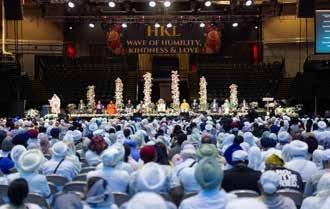


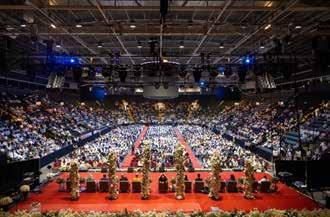



itAUn aWp, brykF, aYgjLfst, PrMt aYWz vrk, ieMjn irpyarjL, klWc, vftr pMp, trYnI srivs, XU- jfieMtjL, PrMt aYksl sLfPtjL afid



d` h@l qs@lIbKS kMm
kIq` j~d`









Jasbir Bhogal
Sales & Lease Consultant
Phone: 604-300-2885
Email: jbhogal@murraygmabbotsford.com
Rushal Chawla
Financial Services Manager
Phone: 604-300-7015
Email: rchawla@murraygmabbotsford.com
Sunil Desai
Sales Manager
Phone: 778-868-5757
Email: sdesai@murraygmabbotsford.com
Bhatti
Sales & Lease Consultant
Phone: 604-308-4944
Email: nbhatti@murraygmabbotsford.com
